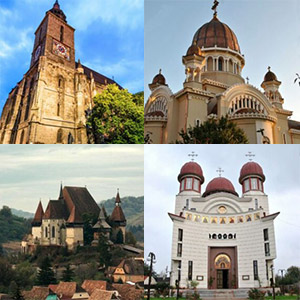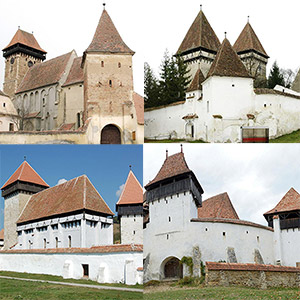Our UiR database: search results for „Monasteries”

Bucovina | Moldavian monasteries
(18 December 2025)
X

(18 December 2025)
The monasteries of Bukovina (Bucovina) are located in Suceava County in the northeast of Romania.
They include the areas and monasteries of Putna, Sucevita, Vatra Moldovitei, Arbore, Monastirea Humorului, Cacica, Botosana, Cajvana, Patrauti, Mitocul Dragomirnei, Scheia, Ilisesti, Udesti, Baia, Rasca, Slatina, Vama, Sadova, Fundu Moldovei, Pojorata, Dorna Arini, Ciocanesti, Panaci, the towns of Gura Humorului, Dolhasca, as well as the communities of Suceava, Siret, Campulung Moldovenesc, Falticeni, Vatra Dornei.
https://welcome-to-romania.com | https://urlaub-in-rumänien.de
We thank Tom & Helga for these beautiful pictures from their Romania tour in September and October 2024. Many thanks 🥰
They include the areas and monasteries of Putna, Sucevita, Vatra Moldovitei, Arbore, Monastirea Humorului, Cacica, Botosana, Cajvana, Patrauti, Mitocul Dragomirnei, Scheia, Ilisesti, Udesti, Baia, Rasca, Slatina, Vama, Sadova, Fundu Moldovei, Pojorata, Dorna Arini, Ciocanesti, Panaci, the towns of Gura Humorului, Dolhasca, as well as the communities of Suceava, Siret, Campulung Moldovenesc, Falticeni, Vatra Dornei.
https://welcome-to-romania.com | https://urlaub-in-rumänien.de
We thank Tom & Helga for these beautiful pictures from their Romania tour in September and October 2024. Many thanks 🥰

Voronet Monastery | Suceava County
(03 December 2025)
X

(03 December 2025)
Pictures from last weekend (November 30, 2025) of Voronet Monastery in Suceava County.
It is part of the so-called "Moldavian monasteries," which are located in the historical region of Bukovina in the northeast of Romania. The entrance fee for visitors is 10 lei (2 euros) for adults and 5 lei (1 euro) for children and students.
We thank the photographer for sending the pictures from his weekend trip. Thank you, Roland 😊
It is part of the so-called "Moldavian monasteries," which are located in the historical region of Bukovina in the northeast of Romania. The entrance fee for visitors is 10 lei (2 euros) for adults and 5 lei (1 euro) for children and students.
We thank the photographer for sending the pictures from his weekend trip. Thank you, Roland 😊

Monasteries of Moldovita, Sucevita, Putna, and Voronet
(02 December 2025)
X

(02 December 2025)
Pictures from last weekend (November 30, 2025) of the monasteries Moldovita, Sucevita, Putna, and Voronet in Suceava County.
The so-called "Moldavian monasteries" are located in the historical region of Bukovina in the northeast of Romania.
This includes the areas and monasteries of Putna, Sucevita, Vatra Moldovitei, Arbore, Monastirea Humorului, Cacica, Botosana, Cajvana, Patrauti, Mitocul Dragomirnei, Scheia, Ilisesti, Udesti, Baia, Rasca, Slatina, Vama, Sadova, Fundu Moldovei, Pojorata, Dorna Arini, Ciocanesti, Panaci, the towns of Gura Humorului, Dolhasca, as well as the communities of Suceava, Siret, Campulung Moldovenesc, Falticeni, Vatra Dornei.
We thank the photographer for sending the pictures from his weekend trip. Thank you, Roland 😊
The so-called "Moldavian monasteries" are located in the historical region of Bukovina in the northeast of Romania.
This includes the areas and monasteries of Putna, Sucevita, Vatra Moldovitei, Arbore, Monastirea Humorului, Cacica, Botosana, Cajvana, Patrauti, Mitocul Dragomirnei, Scheia, Ilisesti, Udesti, Baia, Rasca, Slatina, Vama, Sadova, Fundu Moldovei, Pojorata, Dorna Arini, Ciocanesti, Panaci, the towns of Gura Humorului, Dolhasca, as well as the communities of Suceava, Siret, Campulung Moldovenesc, Falticeni, Vatra Dornei.
We thank the photographer for sending the pictures from his weekend trip. Thank you, Roland 😊

A journey through Romania | Moldavian monasteries
(17 November 2025)

Cheile Mănăstirii / Gorge of the Monasteries | Alba County
(10 November 2025)
X

(10 November 2025)
Cheile Manastirii is a nature reserve located in the west of Transylvania, in Alba County.
It is situated in the central-eastern part of the Trascau Mountains (highest peak: 1,250 meters), on the territory of the communes of Ramet (Valea Manastirii village) and Stremt (Fata Pietrii village).
https://welcome-to-romania.com | https://urlaub-in-rumänien.de
We thank Tom & Helga for these beautiful pictures from their Romania tour in September and October 2024. Many thanks! 🥰
It is situated in the central-eastern part of the Trascau Mountains (highest peak: 1,250 meters), on the territory of the communes of Ramet (Valea Manastirii village) and Stremt (Fata Pietrii village).
https://welcome-to-romania.com | https://urlaub-in-rumänien.de
We thank Tom & Helga for these beautiful pictures from their Romania tour in September and October 2024. Many thanks! 🥰

Bucovina | Moldavian Monasteries (Part 1 of 2)
(04 October 2025)
X

(04 October 2025)
The monasteries of Bukovina (Bucovina) are located in Suceava County in the northeast of Romania.
They include the areas and monasteries of Putna, Sucevita, Vatra Moldoviței, Arbore, Monastirea Humorului, Cacica, Botoșana, Cajvana, Patrauți, Mitocul Dragomirnei, Scheia, Ilișesti, Udești, Baia, Rașca, Slatina, Vama, Sadova, Fundu Moldovei, Pojorata, Dorna Arini, Ciocanești, Panaci, the towns of Gura Humorului, Dolhasca, as well as the communities of Suceava, Siret, Campulung Moldovenesc, Falticeni, Vatra Dornei.
https://welcome-to-romania.com | https://urlaub-in-rumänien.de
We thank Tom & Helga for these beautiful pictures from their Romania tour in September and October 2024. Many thanks! 🥰
They include the areas and monasteries of Putna, Sucevita, Vatra Moldoviței, Arbore, Monastirea Humorului, Cacica, Botoșana, Cajvana, Patrauți, Mitocul Dragomirnei, Scheia, Ilișesti, Udești, Baia, Rașca, Slatina, Vama, Sadova, Fundu Moldovei, Pojorata, Dorna Arini, Ciocanești, Panaci, the towns of Gura Humorului, Dolhasca, as well as the communities of Suceava, Siret, Campulung Moldovenesc, Falticeni, Vatra Dornei.
https://welcome-to-romania.com | https://urlaub-in-rumänien.de
We thank Tom & Helga for these beautiful pictures from their Romania tour in September and October 2024. Many thanks! 🥰

Bucovina | Moldavian Monasteries (Part 2 of 2)
(04 October 2025)
X

(04 October 2025)
The monasteries of Bukovina (Bucovina) are located in Suceava County in the northeast of Romania.
They include the areas and monasteries of Putna, Sucevita, Vatra Moldoviței, Arbore, Monastirea Humorului, Cacica, Botoșana, Cajvana, Patrauți, Mitocul Dragomirnei, Scheia, Ilișesti, Udești, Baia, Rașca, Slatina, Vama, Sadova, Fundu Moldovei, Pojorata, Dorna Arini, Ciocanești, Panaci, the towns of Gura Humorului, Dolhasca, as well as the communities of Suceava, Siret, Campulung Moldovenesc, Falticeni, Vatra Dornei.
https://welcome-to-romania.com | https://urlaub-in-rumänien.de
We thank Tom & Helga for these beautiful pictures from their Romania tour in September and October 2024. Many thanks! 🥰
They include the areas and monasteries of Putna, Sucevita, Vatra Moldoviței, Arbore, Monastirea Humorului, Cacica, Botoșana, Cajvana, Patrauți, Mitocul Dragomirnei, Scheia, Ilișesti, Udești, Baia, Rașca, Slatina, Vama, Sadova, Fundu Moldovei, Pojorata, Dorna Arini, Ciocanești, Panaci, the towns of Gura Humorului, Dolhasca, as well as the communities of Suceava, Siret, Campulung Moldovenesc, Falticeni, Vatra Dornei.
https://welcome-to-romania.com | https://urlaub-in-rumänien.de
We thank Tom & Helga for these beautiful pictures from their Romania tour in September and October 2024. Many thanks! 🥰

Putna Monastery | Suceava County
(03 October 2025)
X

(03 October 2025)
Putna Monastery is located about 70 kilometers from the city of Suceava and is part of the so-called Moldavian monasteries, a group of Romanian Orthodox monasteries in southern Bukovina.
According to a legend told by the historian Ion Neculce, before founding the monastery, Stephen the Great shot an arrow from a mountain into the nearby Carpathian valley. The prince decided to build an altar at the spot where his arrow landed. Afterwards, Prince Stephen had the monastery built between 1466 and 1469.
The monastery was consecrated on September 3, 1470. At that time, Putna Monastery was a flourishing cultural center. Between the 15th and 16th centuries, clergy and chroniclers from the region were trained there.
We thank Mrs. Monika Opreapopa for sending and allowing us to use these pictures.
According to a legend told by the historian Ion Neculce, before founding the monastery, Stephen the Great shot an arrow from a mountain into the nearby Carpathian valley. The prince decided to build an altar at the spot where his arrow landed. Afterwards, Prince Stephen had the monastery built between 1466 and 1469.
The monastery was consecrated on September 3, 1470. At that time, Putna Monastery was a flourishing cultural center. Between the 15th and 16th centuries, clergy and chroniclers from the region were trained there.
We thank Mrs. Monika Opreapopa for sending and allowing us to use these pictures.

Travel to Romania, in any season
(15 September 2025)
X

(15 September 2025)
A small selection of destinations in Romania: Brasov / Kronstadt, Transylvania, Bran Castle / Törzburg, Moldavian monasteries, the Danube Delta, and Cantacuzino Castle, the filming location of the Netflix series "Wednesday."
Discover more destinations in Romania and create your own travel plan > https://rotravel24.com
Discover more destinations in Romania and create your own travel plan > https://rotravel24.com

Romania | Travel destination 2025 / 2026 (Part 1 of 2)
(05 September 2025)
X

(05 September 2025)
Romania – still a hidden gem, but definitely a wonderful one 🥰
A diverse history (Transylvania, Banat, ...), pure nature, delicious food, and rich traditions. Vast nature interwoven with historic and modern cities, the Black Sea, the Moldavian monasteries, the Danube Delta, and so much more...!
Here’s a small selection of pictures ... from across the country 🥰 Create your own travel plan easily on https://rotravel24.com.
Learn how it works here > https://rotravel24.com/wie-es-funktioniert/
A diverse history (Transylvania, Banat, ...), pure nature, delicious food, and rich traditions. Vast nature interwoven with historic and modern cities, the Black Sea, the Moldavian monasteries, the Danube Delta, and so much more...!
Here’s a small selection of pictures ... from across the country 🥰 Create your own travel plan easily on https://rotravel24.com.
Learn how it works here > https://rotravel24.com/wie-es-funktioniert/

Romania | Travel destination 2025 / 2026 (Part 2 of 2)
(05 September 2025)
X

(05 September 2025)
Romania – still a hidden gem, but definitely a wonderful one 🥰
A diverse history (Transylvania, Banat, ...), pure nature, delicious food, and rich traditions. Vast nature interwoven with historic and modern cities, the Black Sea, the Moldavian monasteries, the Danube Delta, and so much more...!
Here’s a small selection of pictures ... from across the country 🥰 Create your own travel plan easily on https://rotravel24.com.
Learn how it works here > https://rotravel24.com/wie-es-funktioniert/
A diverse history (Transylvania, Banat, ...), pure nature, delicious food, and rich traditions. Vast nature interwoven with historic and modern cities, the Black Sea, the Moldavian monasteries, the Danube Delta, and so much more...!
Here’s a small selection of pictures ... from across the country 🥰 Create your own travel plan easily on https://rotravel24.com.
Learn how it works here > https://rotravel24.com/wie-es-funktioniert/

Putna Monastery | Suceava County
(26 August 2025)
X

(26 August 2025)
Putna Monastery is located about 70 kilometers from the city of Suceava and is part of the so-called Moldavian monasteries, a group of Romanian Orthodox monasteries in southern Bukovina.
According to a legend told by the historian Ion Neculce, before founding the monastery, Stephen the Great shot an arrow from a mountain into the nearby Carpathian valley. The prince decided to build an altar at the spot where his arrow landed. Afterwards, Prince Stephen had the monastery built between 1466 and 1469.
The monastery was consecrated on September 3, 1470. At that time, Putna Monastery was a flourishing cultural center. Between the 15th and 16th centuries, clergy and chroniclers from the region were trained there.
We thank Mrs. Monika Opreapopa for sending and allowing us to use these pictures.
According to a legend told by the historian Ion Neculce, before founding the monastery, Stephen the Great shot an arrow from a mountain into the nearby Carpathian valley. The prince decided to build an altar at the spot where his arrow landed. Afterwards, Prince Stephen had the monastery built between 1466 and 1469.
The monastery was consecrated on September 3, 1470. At that time, Putna Monastery was a flourishing cultural center. Between the 15th and 16th centuries, clergy and chroniclers from the region were trained there.
We thank Mrs. Monika Opreapopa for sending and allowing us to use these pictures.

Romania | Travel destination 2025 / 2026
(17 August 2025)
X

(17 August 2025)
Romania – still a hidden gem, but definitely a wonderful one 🥰
A diverse history (Transylvania, Banat, ...), pure nature, delicious food, and rich traditions. Vast landscapes interwoven with historic and modern cities, the Black Sea, the Moldavian monasteries, the Danube Delta, and so much more...!
Here’s a small selection of pictures... from across the country 🥰
https://rotravel24.com | https://welcome-to-romania.com
A diverse history (Transylvania, Banat, ...), pure nature, delicious food, and rich traditions. Vast landscapes interwoven with historic and modern cities, the Black Sea, the Moldavian monasteries, the Danube Delta, and so much more...!
Here’s a small selection of pictures... from across the country 🥰
https://rotravel24.com | https://welcome-to-romania.com

Moldovita Monastery | Suceava County
(04 August 2025)
X

(04 August 2025)
Moldovita Monastery is a Romanian Orthodox monastery located in the commune of Vatra Moldovitei, Suceava County. The monastery was built in 1532 by Petru Rares, the illegitimate son of Stephen III of Moldavia.
It is one of the eight monasteries in Northern Moldavia with frescoes on the exterior walls. Sister Maika, who has lived in the monastery for more than 50 years, says it is “the Holy Scripture in color.” The frescoes of Moldovita were painted by Toma of Suceava in 1537. They are filled with yellow accents and are well preserved. The predominantly yellow-blue paintings on the outside depict recurring themes in Christian Orthodox art.
We thank Mrs. Monika Opreapopa for sending and allowing us to use these pictures.
It is one of the eight monasteries in Northern Moldavia with frescoes on the exterior walls. Sister Maika, who has lived in the monastery for more than 50 years, says it is “the Holy Scripture in color.” The frescoes of Moldovita were painted by Toma of Suceava in 1537. They are filled with yellow accents and are well preserved. The predominantly yellow-blue paintings on the outside depict recurring themes in Christian Orthodox art.
We thank Mrs. Monika Opreapopa for sending and allowing us to use these pictures.

Putna Monastery | Suceava County
(04 August 2025)
X

(04 August 2025)
Putna Monastery is located about 70 kilometers from the city of Suceava and is part of the so-called Moldavian monasteries, a group of Romanian Orthodox monasteries in southern Bukovina.
According to a legend told by the historian Ion Neculce, before founding the monastery, Stephen the Great shot an arrow from a mountain into the nearby Carpathian valley. The prince decided to build an altar at the spot where his arrow landed. Afterwards, Prince Stephen had the monastery built between 1466 and 1469.
The monastery was consecrated on September 3, 1470. At that time, Putna Monastery was a flourishing cultural center. Between the 15th and 16th centuries, clergy and chroniclers from the region were trained there.
We thank Mrs. Monika Opreapopa for sending and allowing us to use these pictures.
According to a legend told by the historian Ion Neculce, before founding the monastery, Stephen the Great shot an arrow from a mountain into the nearby Carpathian valley. The prince decided to build an altar at the spot where his arrow landed. Afterwards, Prince Stephen had the monastery built between 1466 and 1469.
The monastery was consecrated on September 3, 1470. At that time, Putna Monastery was a flourishing cultural center. Between the 15th and 16th centuries, clergy and chroniclers from the region were trained there.
We thank Mrs. Monika Opreapopa for sending and allowing us to use these pictures.

Monasteries in Bukovina (Bucovina) | Suceava County
(26 July 2025)
X

(26 July 2025)
The UNESCO World Heritage-listed monasteries of Bukovina (Bucovina), known as the Moldavian Monasteries, are located in Suceava County in northeastern Romania.
https://welcome-to-romania.com | https://urlaub-in-rumänien.de
They include the areas and monasteries of Putna, Sucevita, Vatra Moldoviței, Arbore, Monastirea Humorului, Cacica, Botoșana, Cajvana, Patrauți, Mitocul Dragomirnei, Scheia, Ilișesti, Udești, Baia, Rașca, Slatina, Vama, Sadova, Fundu Moldovei, Pojorata, Dorna Arini, Ciocanești, Panaci, as well as the towns of Gura Humorului, Dolhasca, and the municipalities of Suceava, Siret, Câmpulung Moldovenesc, Fălticeni, and Vatra Dornei.
Images / Text: https://destinatiaanului.ro/
https://welcome-to-romania.com | https://urlaub-in-rumänien.de
They include the areas and monasteries of Putna, Sucevita, Vatra Moldoviței, Arbore, Monastirea Humorului, Cacica, Botoșana, Cajvana, Patrauți, Mitocul Dragomirnei, Scheia, Ilișesti, Udești, Baia, Rașca, Slatina, Vama, Sadova, Fundu Moldovei, Pojorata, Dorna Arini, Ciocanești, Panaci, as well as the towns of Gura Humorului, Dolhasca, and the municipalities of Suceava, Siret, Câmpulung Moldovenesc, Fălticeni, and Vatra Dornei.
Images / Text: https://destinatiaanului.ro/
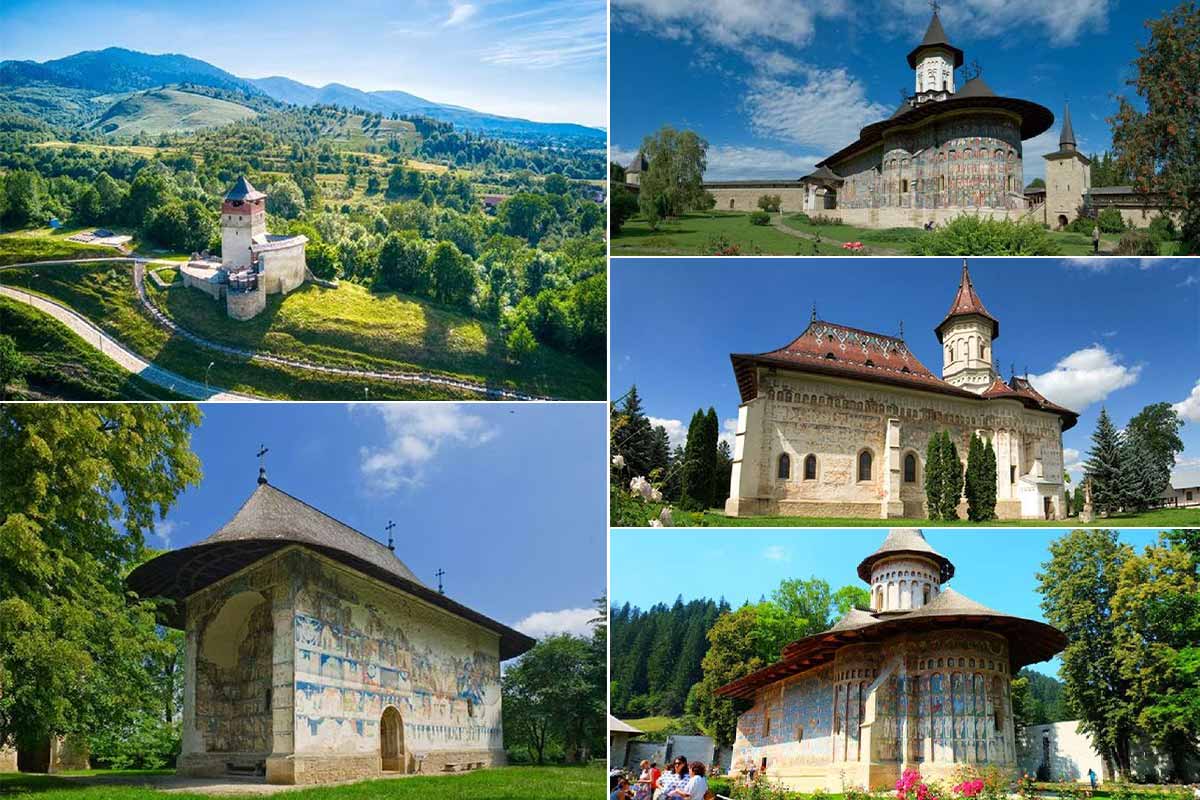
Monasteries in Bukovina (Bucovina) | Moldavian monasteries
(22 June 2025)
X

(22 June 2025)
The monasteries of Bukovina (Bucovina) are located in Suceava County, in the northeast of Romania.
They include the areas and monasteries of Putna, Sucevita, Vatra Moldoviței, Arbore, Monastirea Humorului, Cacica, Botoșana, Cajvana, Patrauti, Mitocul Dragomirnei, Scheia, Ilișesti, Udești, Baia, Rașca, Slatina, Vama, Sadova, Fundu Moldovei, Pojorata, Dorna Arini, Ciocanești, Panaci, the towns of Gura Humorului, Dolhasca, as well as the municipalities of Suceava, Siret, Campulung Moldovenesc, Falticeni, Vatra Dornei.
Pictures / Text: https://destinatiaanului.ro
They include the areas and monasteries of Putna, Sucevita, Vatra Moldoviței, Arbore, Monastirea Humorului, Cacica, Botoșana, Cajvana, Patrauti, Mitocul Dragomirnei, Scheia, Ilișesti, Udești, Baia, Rașca, Slatina, Vama, Sadova, Fundu Moldovei, Pojorata, Dorna Arini, Ciocanești, Panaci, the towns of Gura Humorului, Dolhasca, as well as the municipalities of Suceava, Siret, Campulung Moldovenesc, Falticeni, Vatra Dornei.
Pictures / Text: https://destinatiaanului.ro

Manastirea (monastery) Corbii de Piatra | Arges county
(16 June 2025)
X

(16 June 2025)
Certainly one of the oldest monasteries in Romania is the Corbii de Piatra Monastery.
It is located in the village of Jgheaburi, Corbi commune, in Argeș County. It was built within a cave complex in 1512 during the reign of Neagoe Basarab (1512-1521).
The church of the monastery is carved into the rock (sandstone). Next to the church, also carved into the rock, is the monastery's dining hall, a chamber that, according to tradition, was used by Neagoe Basarab as an open-air courtroom for public trials. The monastery is about 400 meters from the center of Corbi, on the left bank of the Doamnei River. The rock church itself was excavated into a massive rock wall about 30 meters high and 14.5 meters long.
We thank the photographer Corina E. Mateescu for the permission to use these images.
It is located in the village of Jgheaburi, Corbi commune, in Argeș County. It was built within a cave complex in 1512 during the reign of Neagoe Basarab (1512-1521).
The church of the monastery is carved into the rock (sandstone). Next to the church, also carved into the rock, is the monastery's dining hall, a chamber that, according to tradition, was used by Neagoe Basarab as an open-air courtroom for public trials. The monastery is about 400 meters from the center of Corbi, on the left bank of the Doamnei River. The rock church itself was excavated into a massive rock wall about 30 meters high and 14.5 meters long.
We thank the photographer Corina E. Mateescu for the permission to use these images.

Monastery (Kloster) Stone Ravens
(21 April 2025)
X

(21 April 2025)
Certainly one of the oldest monasteries in Romania is the Corbii de Piatră Monastery.
It is located in the village of Jgheaburi, Corbi commune, Argeș County. It was built in a cave complex in 1512 during the reign of Neagoe Basarab (1512-1521).
The monastery church is carved into the rock (sandstone). Next to the church, also carved into the rock, is the monastery's refectory, a room hewn in stone, which according to tradition was used by Neagoe Basarab as an open-air courtroom for public hearings. The monastery is located about 400 meters from the center of Corbi, on the left bank of the Doamnei River. The rock church itself was carved into a massive rock wall about 30 meters high and 14.5 meters long.
We thank the photographer Corina E. Mateescu for the permission to use these pictures.
It is located in the village of Jgheaburi, Corbi commune, Argeș County. It was built in a cave complex in 1512 during the reign of Neagoe Basarab (1512-1521).
The monastery church is carved into the rock (sandstone). Next to the church, also carved into the rock, is the monastery's refectory, a room hewn in stone, which according to tradition was used by Neagoe Basarab as an open-air courtroom for public hearings. The monastery is located about 400 meters from the center of Corbi, on the left bank of the Doamnei River. The rock church itself was carved into a massive rock wall about 30 meters high and 14.5 meters long.
We thank the photographer Corina E. Mateescu for the permission to use these pictures.

Romania | What you definitely should see
(19 April 2025)
X

(19 April 2025)
A small selection of cities, places, and destinations that you should definitely visit at least once on a trip through Romania (Part 6 of 500 🥰).
Here: Moldavian Monasteries in Suceava County
https://welcome-to-romania.com | https://willkommen-in-rumänien.de
Arbore Monastery: Church of the Beheading of Saint John the Baptist of the former monastery | Humor Monastery: Church of the Dormition of the Mother of God and Saint George of the monastery | Moldovița Monastery: Church of the Annunciation of the monastery | Pătrăuți Monastery: Church of the Exaltation of the Holy Cross | Probota Monastery: Church of Saint Nicholas of the monastery | Suceava Monastery: Church of Saint George of the Saint John the New Monastery | Sucevița Monastery: Church of the Resurrection of the Lord of Sucevița Monastery (World Heritage since 2010) | Voroneț Monastery: Church of Saint George of Voroneț Monastery
We thank Mrs. Farkas Ildiko (facebook.com/farkas.ildiko.75) for the permission to use these pictures.
Here: Moldavian Monasteries in Suceava County
https://welcome-to-romania.com | https://willkommen-in-rumänien.de
Arbore Monastery: Church of the Beheading of Saint John the Baptist of the former monastery | Humor Monastery: Church of the Dormition of the Mother of God and Saint George of the monastery | Moldovița Monastery: Church of the Annunciation of the monastery | Pătrăuți Monastery: Church of the Exaltation of the Holy Cross | Probota Monastery: Church of Saint Nicholas of the monastery | Suceava Monastery: Church of Saint George of the Saint John the New Monastery | Sucevița Monastery: Church of the Resurrection of the Lord of Sucevița Monastery (World Heritage since 2010) | Voroneț Monastery: Church of Saint George of Voroneț Monastery
We thank Mrs. Farkas Ildiko (facebook.com/farkas.ildiko.75) for the permission to use these pictures.
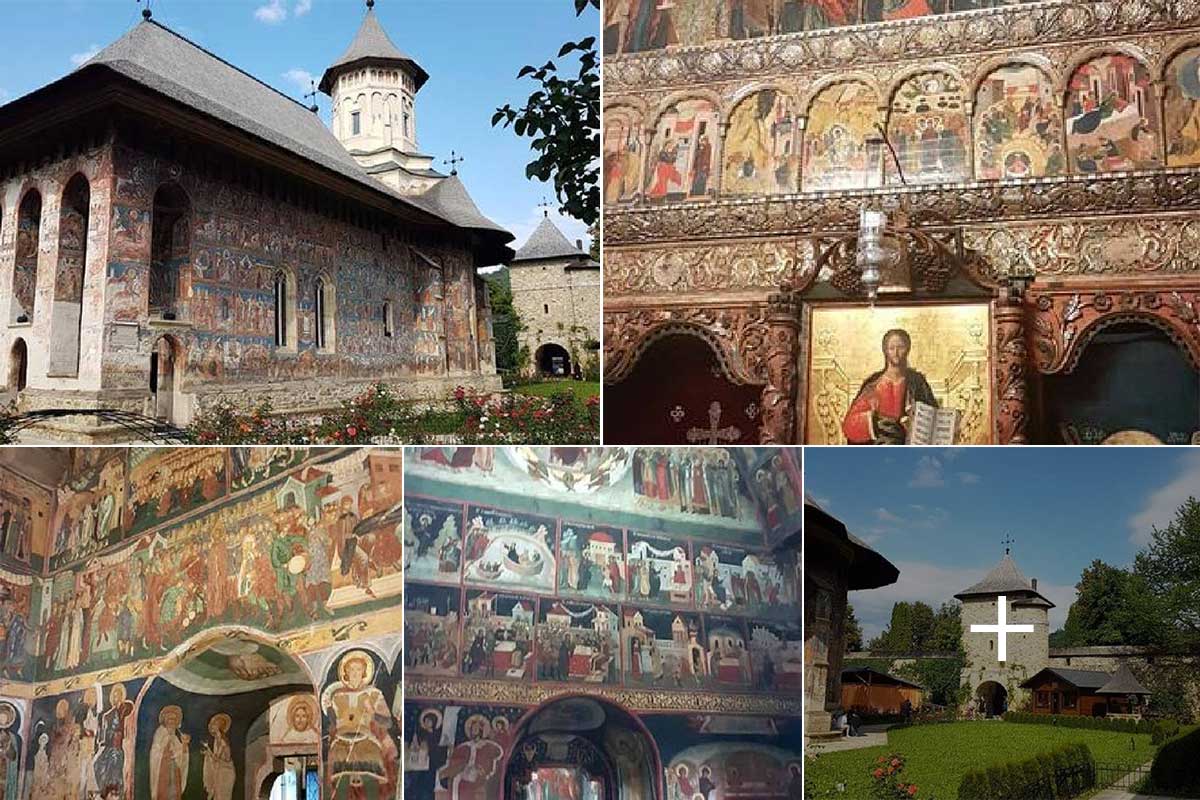
Bukovina (Bucovina) | Moldavian monasteries
(12 April 2025)
X

(12 April 2025)
The Moldavian monasteries are located in the region of Bukovina (northeastern Romania) and were built in the 15th and 16th centuries, during the former Principality of Moldavia.
The monasteries are famous for their stunning frescoes. Many of the buildings are attributed to Stephen the Great, who is said to have founded a monastery for every battle he won. Eight of these monasteries are part of the UNESCO World Heritage.
What makes the Moldavian monasteries special is their uniquely colorful painting, unparalleled in Europe. The monks wanted to convey the teachings of the Holy Scripture to common people who could neither read nor write. Thus, they used the inner walls, facades, and defensive walls of the monasteries to illustrate scenes and parables from the Bible through colorful drawings, paintings, and frescoes. These are considered absolute masterpieces of Byzantine art.
Text and images: Georg Schenk ... Many, many THANKS
The monasteries are famous for their stunning frescoes. Many of the buildings are attributed to Stephen the Great, who is said to have founded a monastery for every battle he won. Eight of these monasteries are part of the UNESCO World Heritage.
What makes the Moldavian monasteries special is their uniquely colorful painting, unparalleled in Europe. The monks wanted to convey the teachings of the Holy Scripture to common people who could neither read nor write. Thus, they used the inner walls, facades, and defensive walls of the monasteries to illustrate scenes and parables from the Bible through colorful drawings, paintings, and frescoes. These are considered absolute masterpieces of Byzantine art.
Text and images: Georg Schenk ... Many, many THANKS

Romania trips from April | Explore and book online
(14 January 2025)
X

(14 January 2025)
More than 20 different trips/tours with around 100 travel dates can be found at the German-speaking specialist for Romania, DRS Reisen GmbH in Stuttgart > https://drs-reisen.de/reisen-tourangebote/
# A 6-day wine tour to the top Cramas (wineries) in Romania starting on April 29, June 16, or July 12?
# Eight (8) days exploring Banat, Transylvania, and Wallachia from April 27, May 23, or June 27?
# Eight (8) days discovering Transylvania, the Moldavian monasteries, and more from April 17, May 25, or July 3?
# And so much more...
# A 6-day wine tour to the top Cramas (wineries) in Romania starting on April 29, June 16, or July 12?
# Eight (8) days exploring Banat, Transylvania, and Wallachia from April 27, May 23, or June 27?
# Eight (8) days discovering Transylvania, the Moldavian monasteries, and more from April 17, May 25, or July 3?
# And so much more...

Eight (8) days round trip "Transylvania and the Moldavian Monasteries" from 799 EUR per person
(14 January 2025)
X

(14 January 2025)
Trips in March, April, May, and more...
https://drs-reisen.de/.../siebenbuergen-und-die.../
German travel agency including travel insurance certificate.
https://drs-reisen.de/.../siebenbuergen-und-die.../
German travel agency including travel insurance certificate.

Putna in winter | Suceava County
(03 January 2025)
X

(03 January 2025)
The Putna Monastery is located about 70 kilometers from the city of Suceava, in the county of the same name, Suceava. Today, it is part of a group of Romanian Orthodox monasteries – the Moldavian monasteries – in southern Bukovina.
We thank Vlad the Impaler - Dracula for the permission to use this image.
We thank Vlad the Impaler - Dracula for the permission to use this image.

Winter in Bukovina ☃☃❤️❤️🇷🇴
(29 November 2024)
X

(29 November 2024)
Bukovina (also called Buchenland in German, Bucovina in Romanian) is a historical region at the crossroads of Central, Southeastern, and Eastern Europe. The southern half belongs to Romania and is part of Suceava County, which is also home to the Moldavian monasteries.
Bukovina, like the region of Bessarabia to the east, was part of the historical Principality of Moldavia for centuries. From 1775 to 1918, the area with its multiethnic population was part of the Habsburg Monarchy.
We thank photographer Cătălin Urdoi (facebook.com/urdoi.catalin) for granting us permission to use these pictures (early January 2022).
Bukovina, like the region of Bessarabia to the east, was part of the historical Principality of Moldavia for centuries. From 1775 to 1918, the area with its multiethnic population was part of the Habsburg Monarchy.
We thank photographer Cătălin Urdoi (facebook.com/urdoi.catalin) for granting us permission to use these pictures (early January 2022).
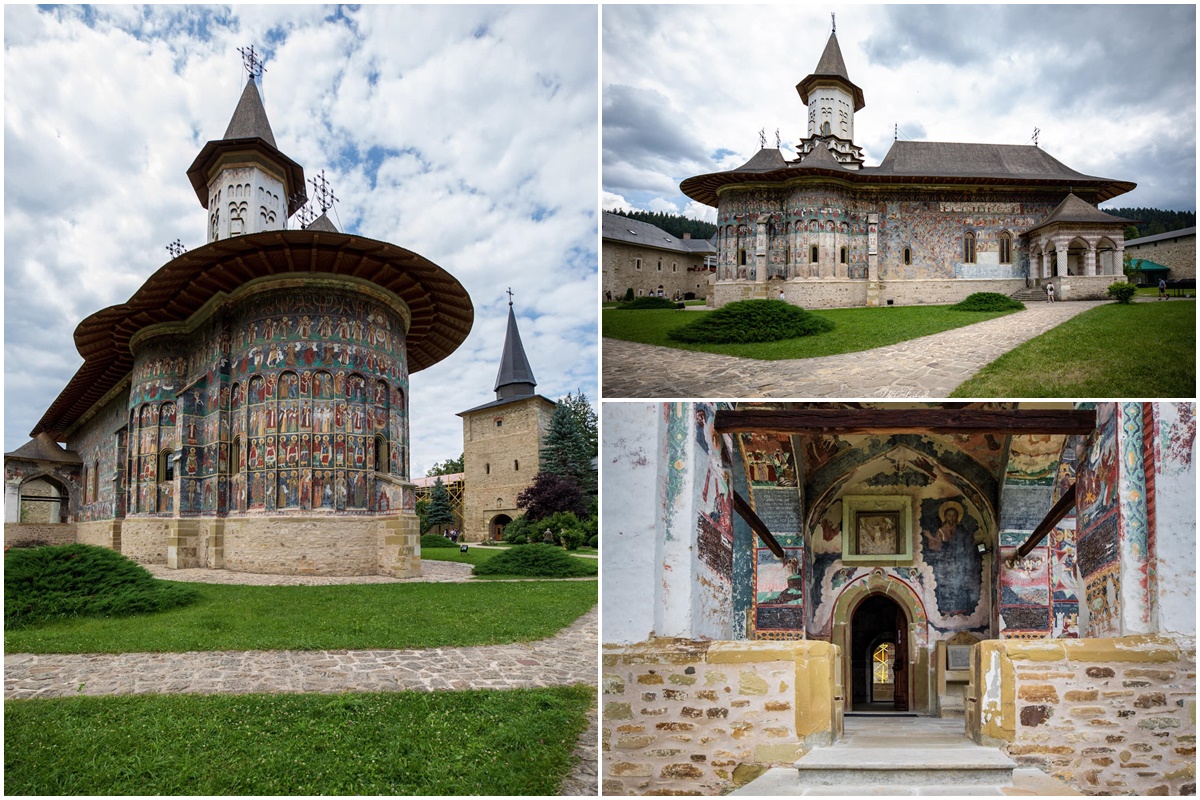
Sucevița Monastery | Suceava County
(15 November 2024)
X

(15 November 2024)
The Sucevița Monastery, built between 1582 and 1584, is located in the Sucevița commune, Suceava County, in northern Romania.
Its Romanian Orthodox Church, dedicated to the Resurrection of Jesus Christ, was added to UNESCO's World Heritage list in August 2010, as part of the eight Moldavian monasteries.
We thank Mrs. Farkas Ildiko (facebook.com/farkas.ildiko.75) for allowing us to use these images.
Its Romanian Orthodox Church, dedicated to the Resurrection of Jesus Christ, was added to UNESCO's World Heritage list in August 2010, as part of the eight Moldavian monasteries.
We thank Mrs. Farkas Ildiko (facebook.com/farkas.ildiko.75) for allowing us to use these images.
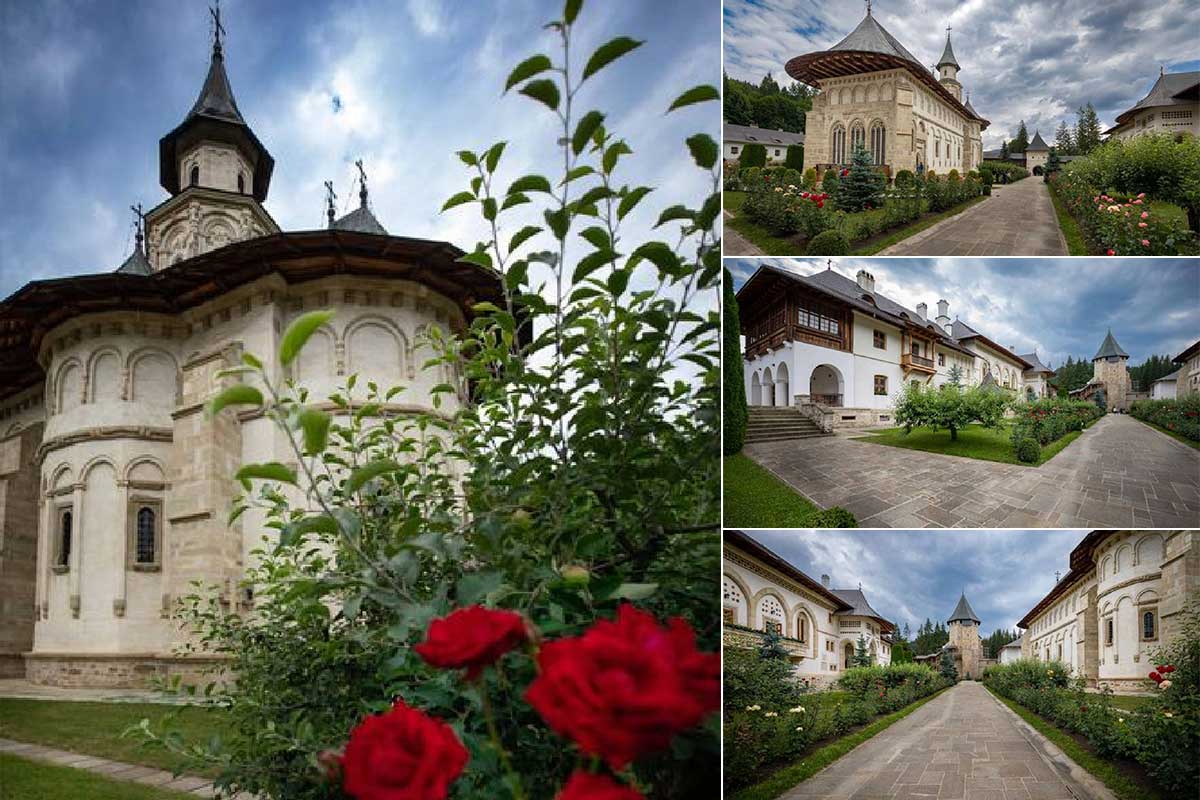
Putna Monastery | Suceava County
(29 August 2024)
X

(29 August 2024)
Putna Monastery is located about 70 kilometers from the city of Suceava, in the county of the same name.
Today it belongs to a group of Romanian Orthodox monasteries – the Moldavian monasteries – situated in southern Bukovina.
The monastery was built between 1466 and 1469 and consecrated in 1470. The monastery museum preserves many precious manuscripts, maps, paintings, icons, linen cloths, and other ecclesiastical objects dating back to the 15th century. Worth mentioning are the self-portrait of Stephen the Great’s second wife, Maria of Mangop, and the skull of Saint Ghenadie.
We thank Mrs. Farkas Ildiko for granting permission to use these wonderful pictures.
Today it belongs to a group of Romanian Orthodox monasteries – the Moldavian monasteries – situated in southern Bukovina.
The monastery was built between 1466 and 1469 and consecrated in 1470. The monastery museum preserves many precious manuscripts, maps, paintings, icons, linen cloths, and other ecclesiastical objects dating back to the 15th century. Worth mentioning are the self-portrait of Stephen the Great’s second wife, Maria of Mangop, and the skull of Saint Ghenadie.
We thank Mrs. Farkas Ildiko for granting permission to use these wonderful pictures.
We thank Farkas Ildiko for the permission to use this image(s)
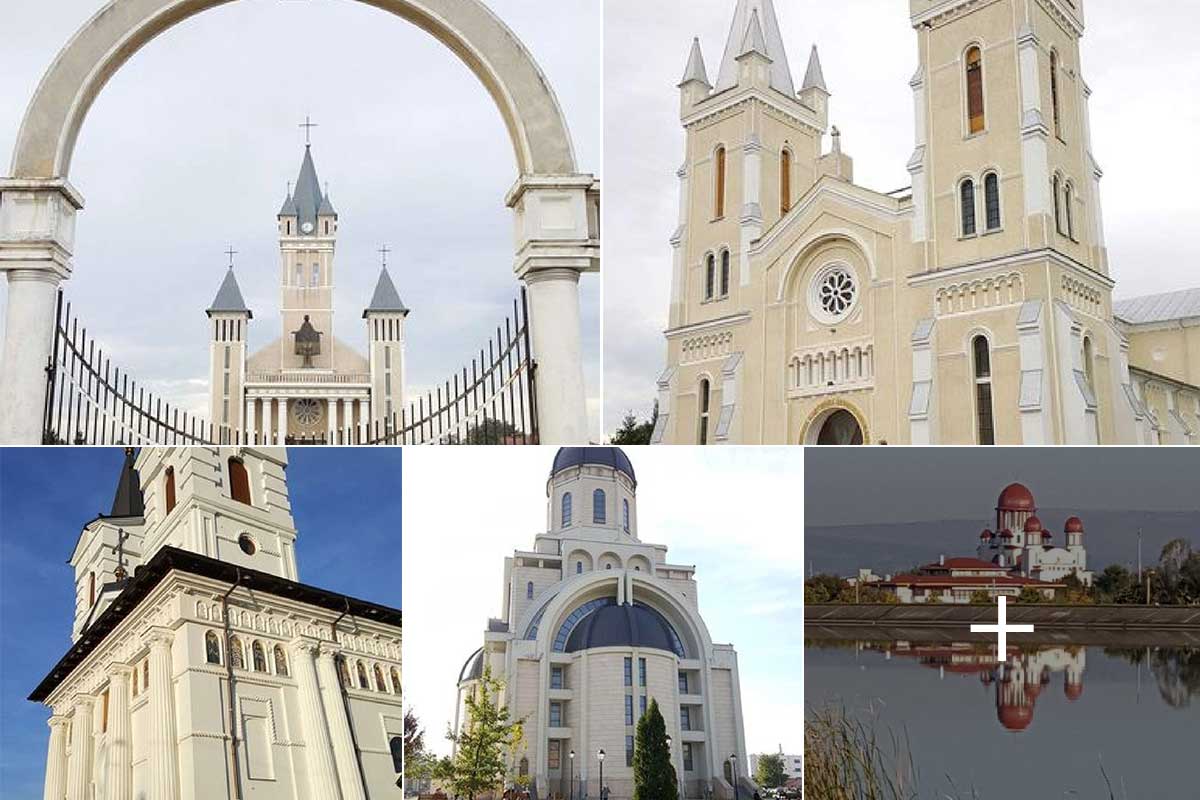
Churches over churches, from Bacău to Botoșani
(19 May 2024)
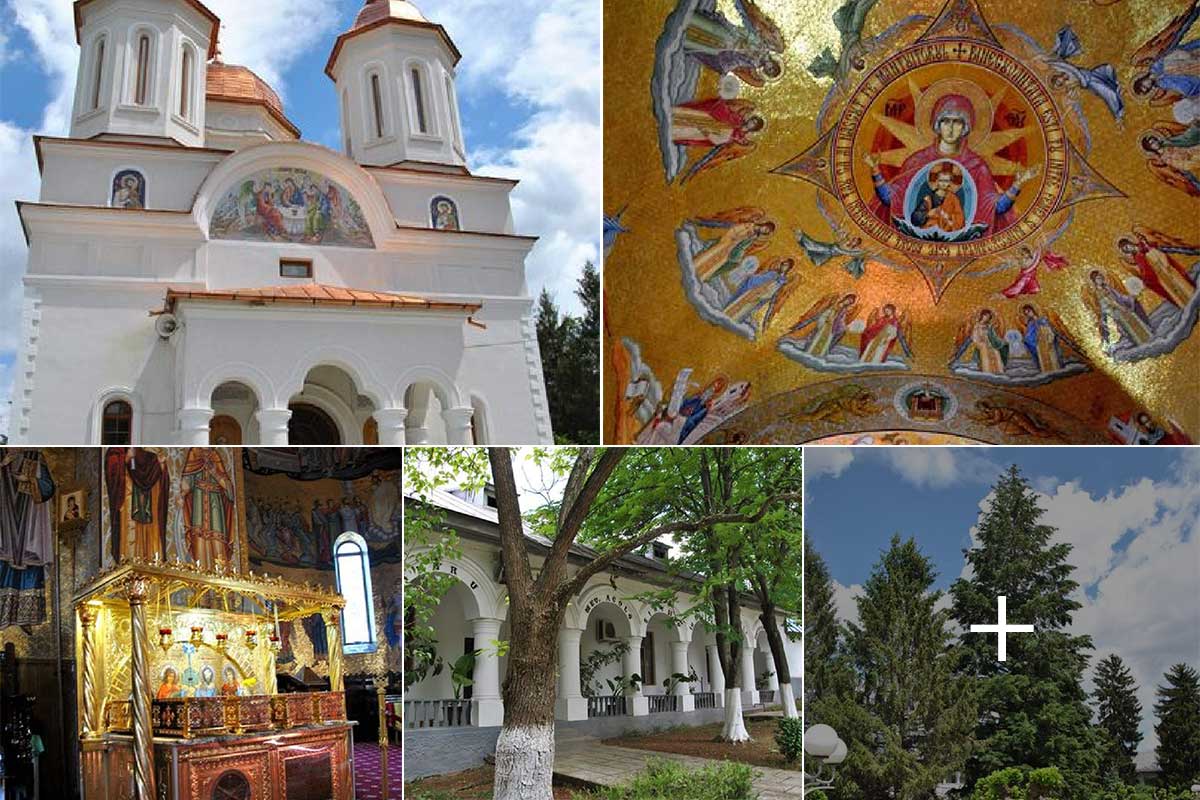
Coşos Monastery | Tulcea County
(10 March 2024)
X

(10 March 2024)
Cocos Monastery is located about 35 km from the city of Tulcea and is administered by a monastic community.
It is located in a remote place, at the foot of a hill, surrounded by the smell of lime forests. The first documentary attestation of a religious settlement in this area dates back to 1679.
Find out more about the monasteries in Romania:
https://xn--urlaub-in-rumnien-2qb.de/.../ausflugsziele.../
It is located in a remote place, at the foot of a hill, surrounded by the smell of lime forests. The first documentary attestation of a religious settlement in this area dates back to 1679.
Find out more about the monasteries in Romania:
https://xn--urlaub-in-rumnien-2qb.de/.../ausflugsziele.../
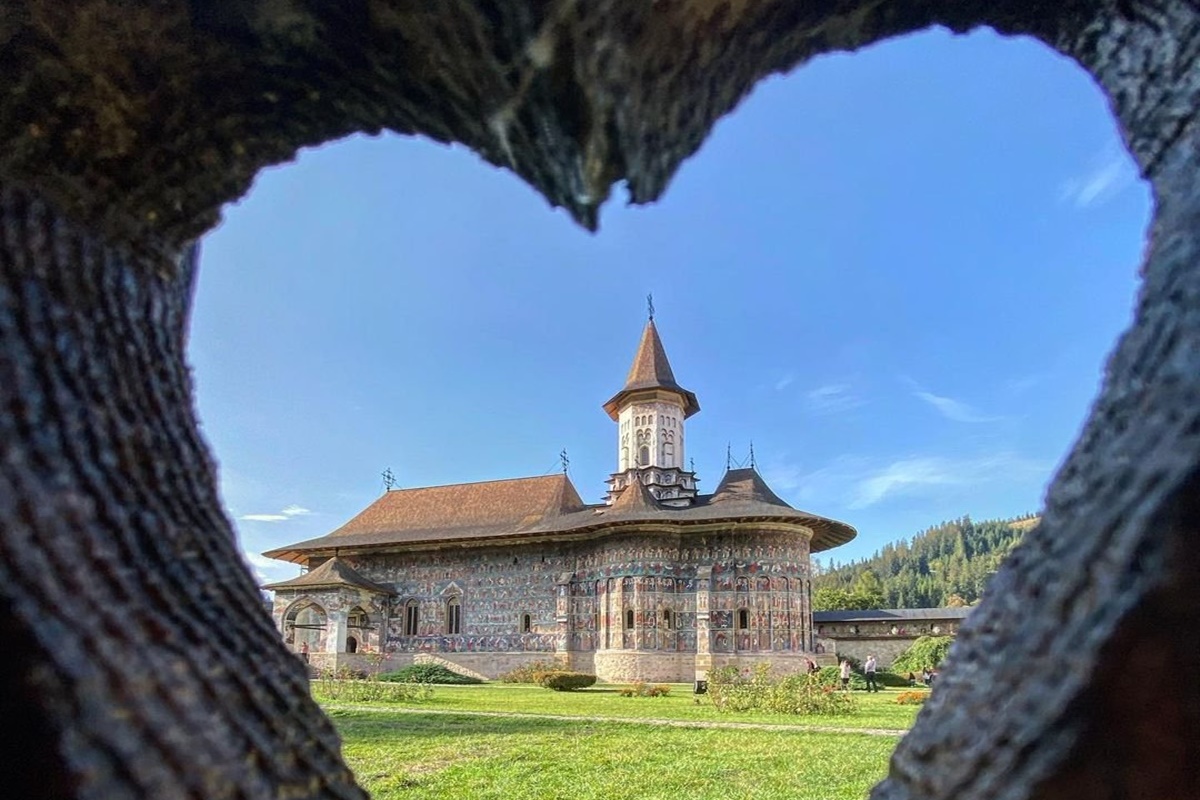
Sucevita Monastery | Suceava County
(17 January 2024)
X

(17 January 2024)
A beautiful image of the church from the Sucevita monastery ( built 1582-1584 ), which is located on the territory of the municipality of Sucevita in Suceava County in northern Romania.
This Romanian Orthodox Church, located in the walls of the monastery, dedicated to the Resurrection of Jesus Christ, was one of eight Moldovan monasteries listed as a UNESCO World Heritage Site in August 2010.
This Romanian Orthodox Church, located in the walls of the monastery, dedicated to the Resurrection of Jesus Christ, was one of eight Moldovan monasteries listed as a UNESCO World Heritage Site in August 2010.
We thank Destinatia Anului (ninatrisciuc) for the permission to use this image(s)

Putna Monastery, Suceava County
(28 November 2023)
X

(28 November 2023)
Putna Monastery, in northeastern Romania, is located about 70 kilometers from the city of Suceava. It belongs to a group of Romanian Orthodox monasteries - the so-called Moldovan monasteries - in southern Bukovina (historical landscape in the border area between Central, South-Eastern and Eastern Europe).
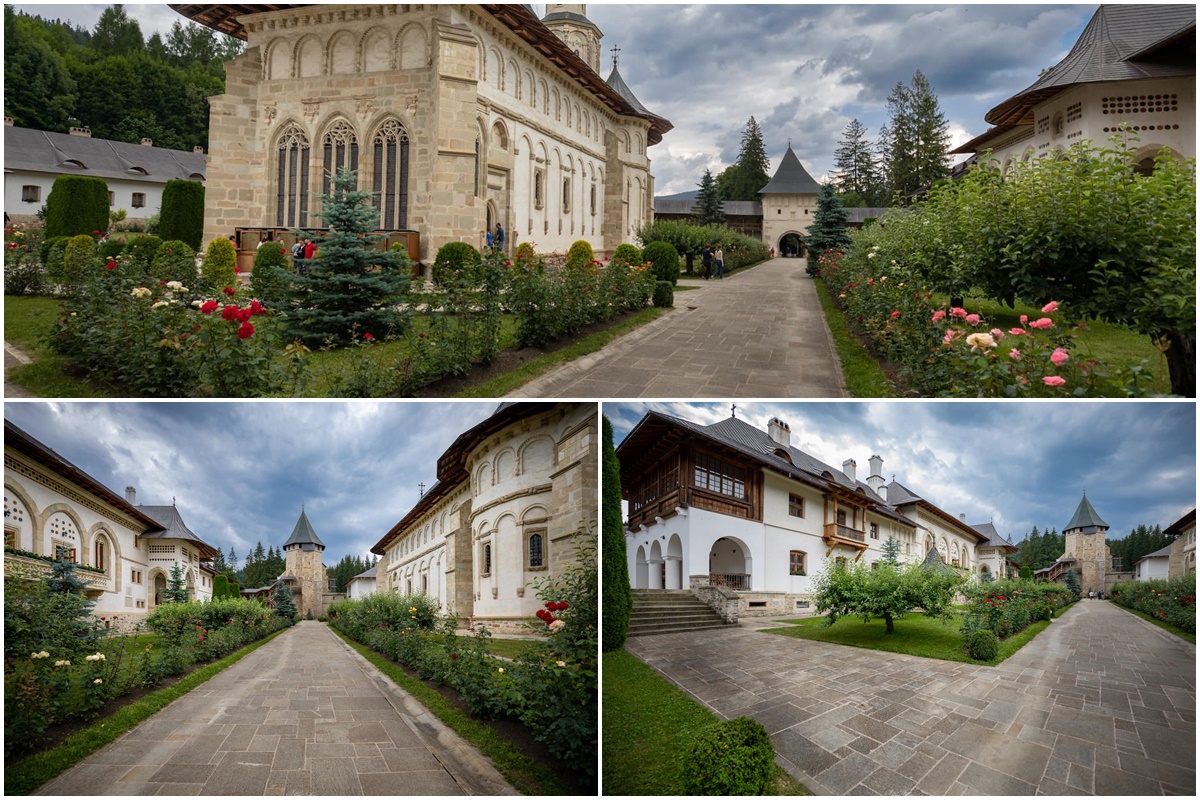
Putna Monastery | Bucovina ( Bukovina )
(14 June 2023)
X

(14 June 2023)
Putna Monastery is located at approx. 70 kilometers from the city of Suceava and is part of the so-called Moldovan monasteries, a group of Romanian Orthodox monasteries in southern Bukovina.
According to a legend of the historian Ion Neculce, Stephen the Great shot an arrow from a mountain in the nearby Carpathian Valley, in 1466, before the establishment of the monastery. The prince decided to build an altar at the place where his arrow was blocked. After that, Prince Stephen built the monastery between 1466 and 1469.
On September 3, 1470, the monastery was inaugurated and Putna Monastery was a thriving cultural center. Clerics and chroniclers in the region were trained there between the 15th and 16th centuries.
According to a legend of the historian Ion Neculce, Stephen the Great shot an arrow from a mountain in the nearby Carpathian Valley, in 1466, before the establishment of the monastery. The prince decided to build an altar at the place where his arrow was blocked. After that, Prince Stephen built the monastery between 1466 and 1469.
On September 3, 1470, the monastery was inaugurated and Putna Monastery was a thriving cultural center. Clerics and chroniclers in the region were trained there between the 15th and 16th centuries.
We thank Farkas Ildiko for the permission to use this image(s)
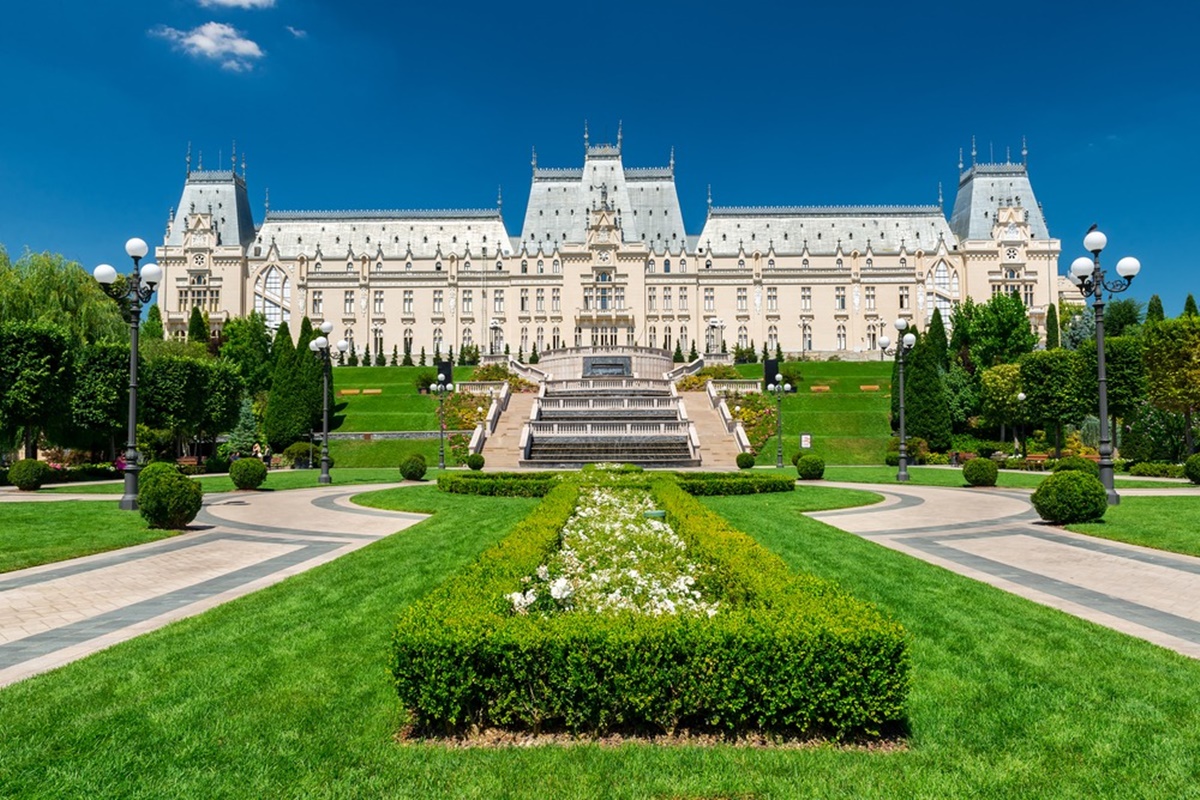
Palace of Culture in Iasi
(18 April 2023)
X

(18 April 2023)
Iași, the ancient capital of Moldova, a city on seven hills, is surrounded by charm and culture, history and poetry.
Centuries-old monasteries and churches, museums and memorials, the first university in the country and the towering culture palace are just some of the most important moments that make Iasi definitely worth a visit.
Centuries-old monasteries and churches, museums and memorials, the first university in the country and the towering culture palace are just some of the most important moments that make Iasi definitely worth a visit.
We thank Destinatia Anului for the permission to use this image(s)
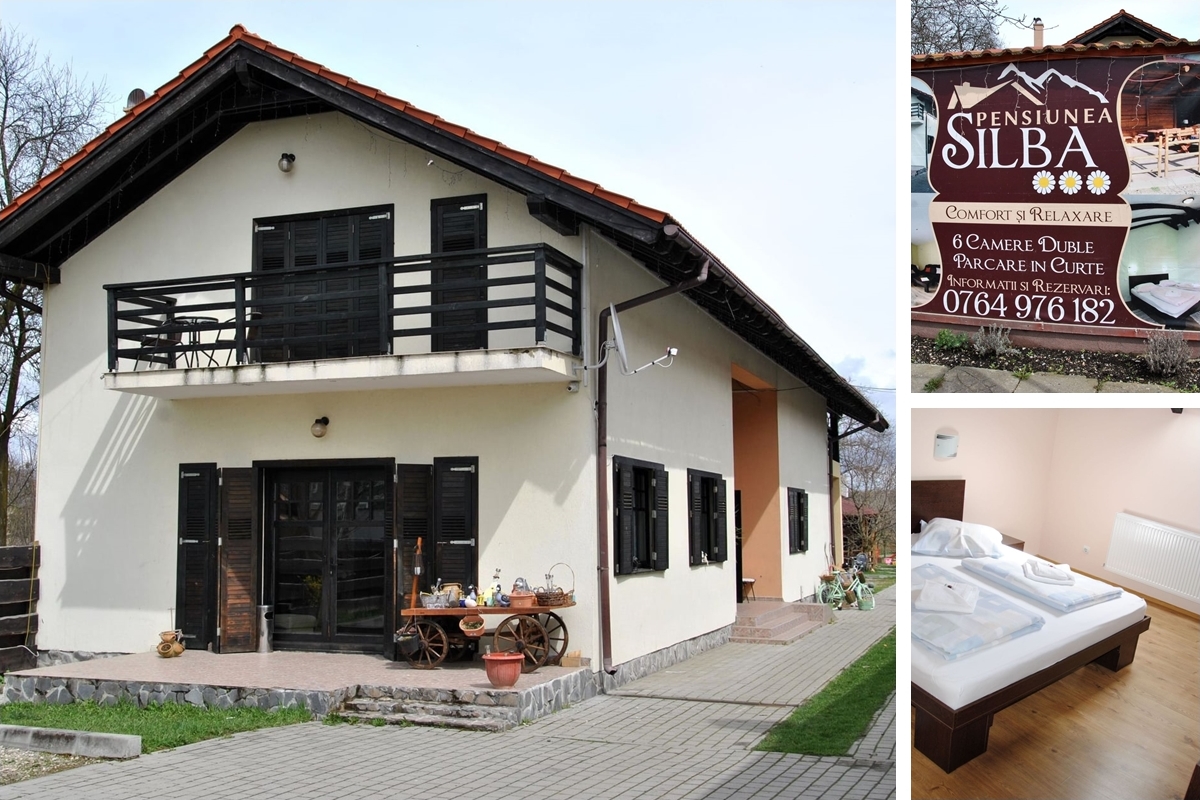
Our travel advice: Pensiunea Silba
(21 March 2023)
X

(21 March 2023)
If you plan your vacation once in the corner of Fagarai in (half way from Sibiu to Brasov and vice versa) (there is magnificent nature, the mountains of Fagaras, many monasteries and other sights and Brasov (Kronstadt) and Sibiu (Hermannstadt) are not far.. . ) find here a very cheap, beautiful and very clean accommodation.
Pension Silba in Vad is approx. 20 km from Fagaras and many excursion destinations can be reached in a short period of time.
A double room (for 2 people) costs from 150 lei per night (approx. 32 Euro, so 16,- Euro/person) and whoever looks at the pictures... you can't say "no" 😊 The guesthouse is ideal for families , as there are many opportunities for outdoor play for children, for adults to "party" and more. The kitchen can also be used by any visitor for self-catering. It's a tip we've tested ourselves and definitely recommend.
https://pensiuneasilba.ro/
Pictures: April 2021
Pension Silba in Vad is approx. 20 km from Fagaras and many excursion destinations can be reached in a short period of time.
A double room (for 2 people) costs from 150 lei per night (approx. 32 Euro, so 16,- Euro/person) and whoever looks at the pictures... you can't say "no" 😊 The guesthouse is ideal for families , as there are many opportunities for outdoor play for children, for adults to "party" and more. The kitchen can also be used by any visitor for self-catering. It's a tip we've tested ourselves and definitely recommend.
https://pensiuneasilba.ro/
Pictures: April 2021
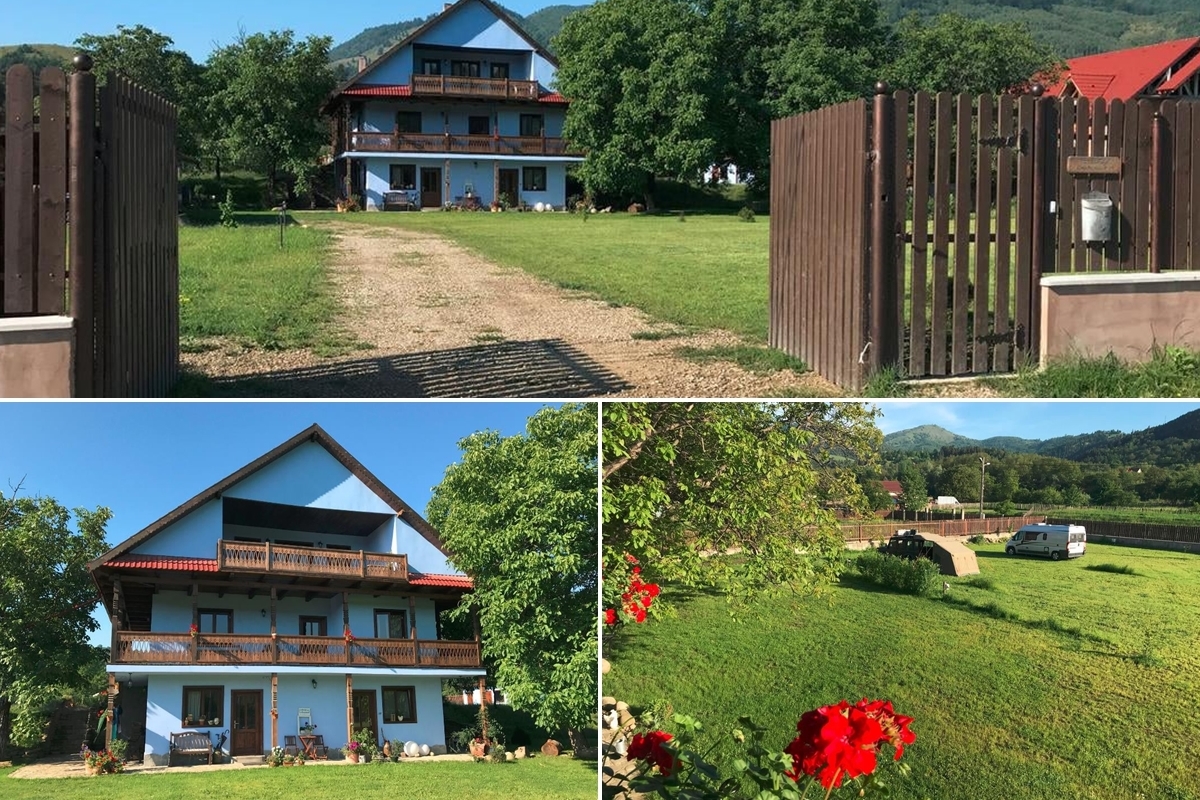
Our advice: camping in Bacau district
(12 March 2023)
X

(12 March 2023)
Camping La Gradina (The Garden) welcomes its multilingual guests (also German) in Comanesti, Bacau district in northeastern Romania.
Twenty (20) pitches with comfort and neat ambience are offered by hosts Valentina and Claus Pleye. The campsite is at a height of approx. 500 meters, close to the river Trotus.
Modern showers and toilets, power connection, potable water connection, disposable travel mobile station and of course WiFi / WiFi is available. German, Romanian and English are spoken.
Comanesti is located west of the city of Bacau, close to Saltmine Onca, the city of Piatra Neamt, Clisura Bicazului with lake and many, many other excursions in the area and with pure nature right at your door. All the north-east of Romania with the famous Moldavian monasteries, built in the 15th and 16th Century, right at our door.
Learn more (languages: Romanian, English, German, Dutch and French):
https://www.camping-lagradina.com
Twenty (20) pitches with comfort and neat ambience are offered by hosts Valentina and Claus Pleye. The campsite is at a height of approx. 500 meters, close to the river Trotus.
Modern showers and toilets, power connection, potable water connection, disposable travel mobile station and of course WiFi / WiFi is available. German, Romanian and English are spoken.
Comanesti is located west of the city of Bacau, close to Saltmine Onca, the city of Piatra Neamt, Clisura Bicazului with lake and many, many other excursions in the area and with pure nature right at your door. All the north-east of Romania with the famous Moldavian monasteries, built in the 15th and 16th Century, right at our door.
Learn more (languages: Romanian, English, German, Dutch and French):
https://www.camping-lagradina.com
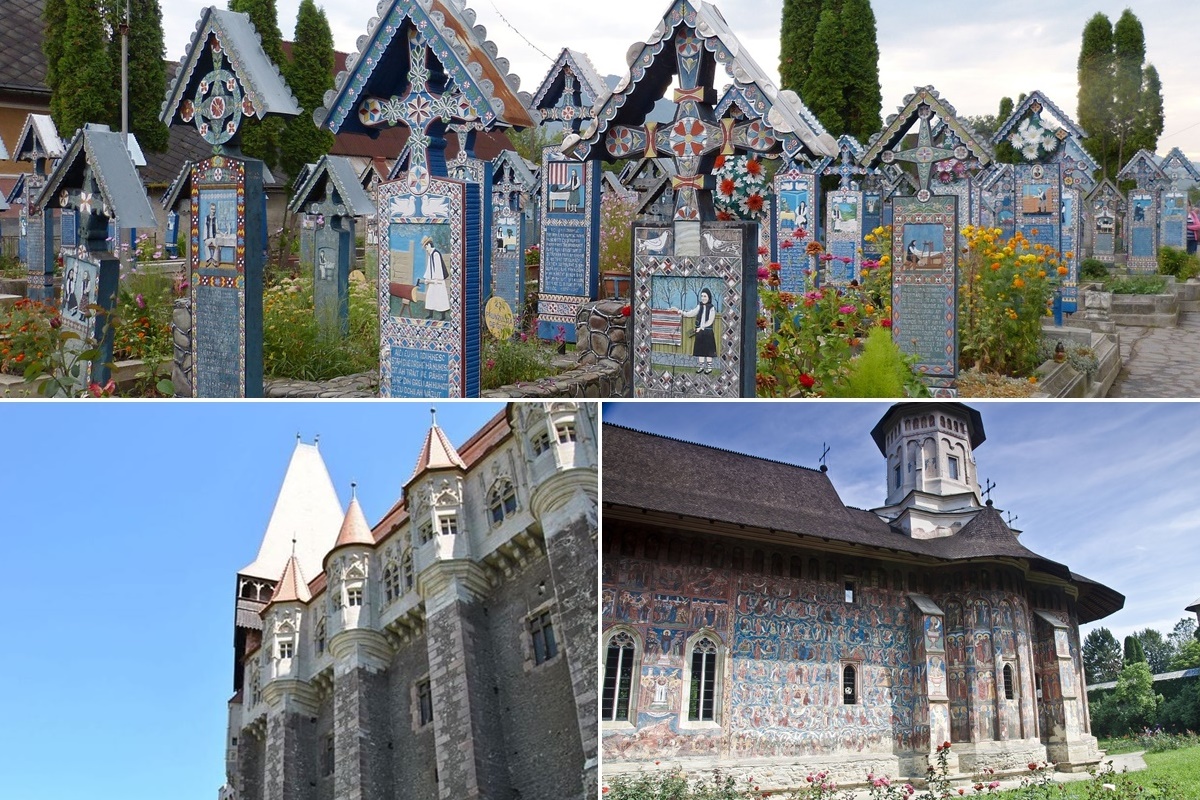
ROMANIA with Pastor Jerome ... from Vienna, Austria
(09 February 2023)
X

(09 February 2023)
Danube Delta Monasteries and Moldova, 9 days | 23.04 - 01.05.2023
ROMANIA is a country where culture and tradition are still high. Whether it is the Danube Delta or the world-renowned Moldovan monasteries with colorful frescoes, Romania is always worth visiting!
https://www.schneider-reisen.at/.../news-rumaenien...
ROMANIA is a country where culture and tradition are still high. Whether it is the Danube Delta or the world-renowned Moldovan monasteries with colorful frescoes, Romania is always worth visiting!
https://www.schneider-reisen.at/.../news-rumaenien...
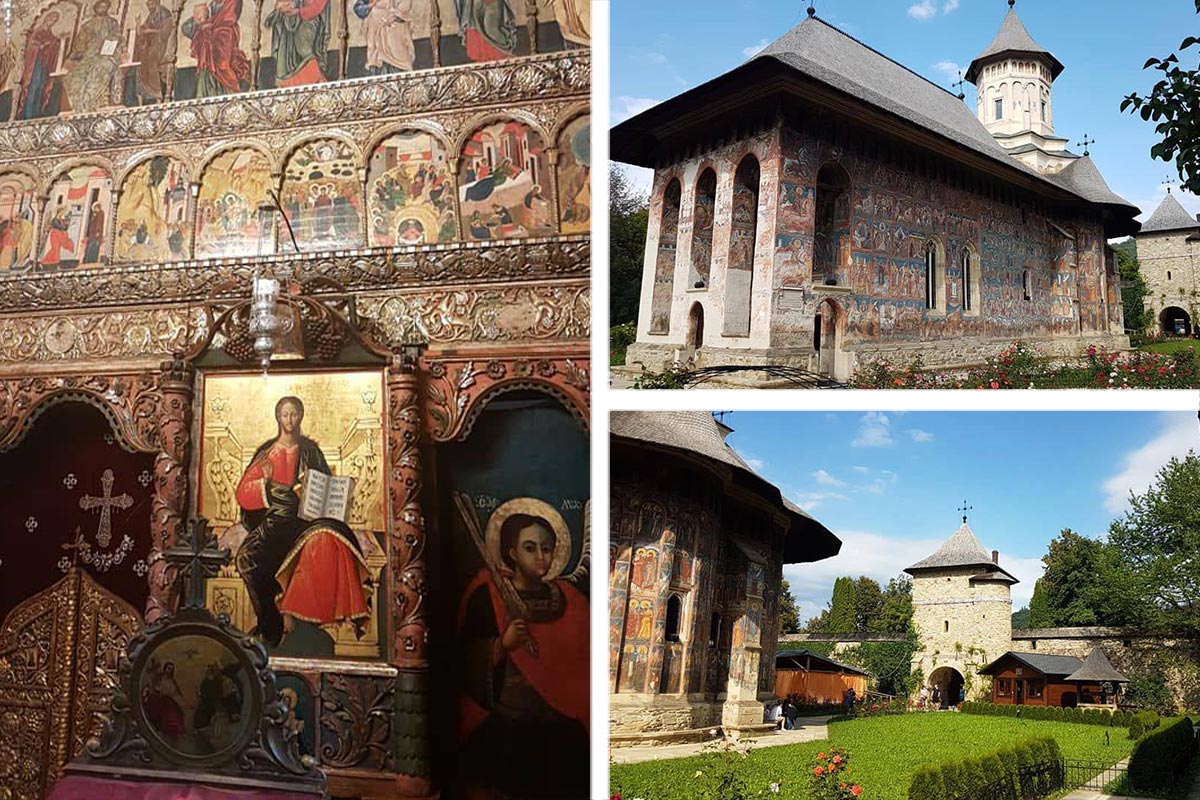
Bucovina - Moldovan monasteries
(29 November 2022)
X

(29 November 2022)
The monasteries of Moldavia are located in Bucovina and were built in the 15th and 16th centuries in the then royal tower Vltava. Monasteries are famous for their magnificent frescoes.
Many of the buildings date from Stephen the Great, who is said to have founded a monastery for every battle won. There are eight World Heritage sites. What is special about the monasteries in Vltava is their colorful painting, which is unique in Europe.
The monks wanted to bring the contents of Holy Scripture closer to the lower classes, who could neither read nor write. And so they used the interior walls, facades, and protective walls of the monastery to depict scenes and parables from the Bible in colorful drawings, paintings, and frescoes. These are considered absolute masterpieces of Byzantine art.
Text and images: Georg Schenk ... Many, many thanks!
Many of the buildings date from Stephen the Great, who is said to have founded a monastery for every battle won. There are eight World Heritage sites. What is special about the monasteries in Vltava is their colorful painting, which is unique in Europe.
The monks wanted to bring the contents of Holy Scripture closer to the lower classes, who could neither read nor write. And so they used the interior walls, facades, and protective walls of the monastery to depict scenes and parables from the Bible in colorful drawings, paintings, and frescoes. These are considered absolute masterpieces of Byzantine art.
Text and images: Georg Schenk ... Many, many thanks!
We thank Georg Schenk for the permission to use this image(s)
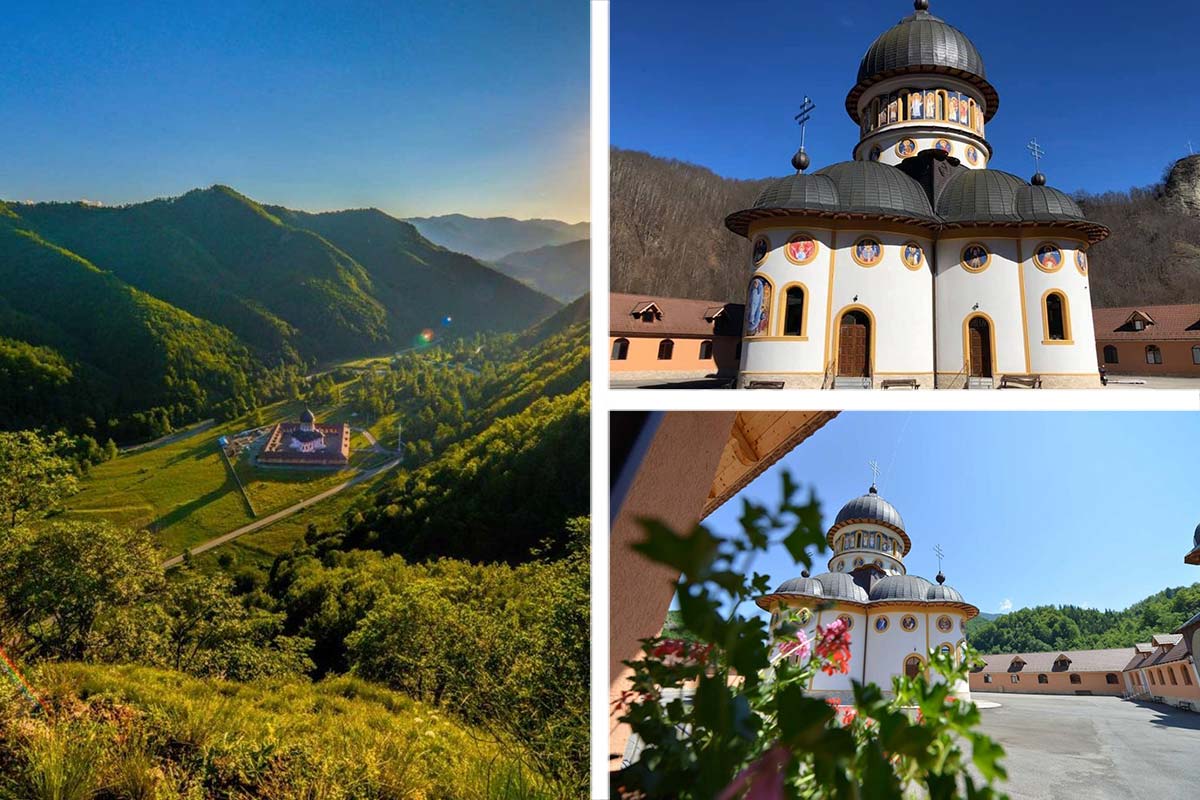
Manastirea Sfântul Ioan Iacob Hozevitul din Țara Loviștei
(11 October 2022)
X

(11 October 2022)
The "Saint Ioan Iacov Hozevitul" monastery in the Băiaş valley, Racoviţa municipality is surrounded by forested mountains.
From the main gate, on a flower-paved road leading to the monastery, the monastery church is revealed to the visitor. They are surrounded by monastic dwellings built like a fortress, similar to the walls of monasteries in northern Moldova.
We thank Vâlcea National Center for Tourist Information and Promotion for permission to use these images.
From the main gate, on a flower-paved road leading to the monastery, the monastery church is revealed to the visitor. They are surrounded by monastic dwellings built like a fortress, similar to the walls of monasteries in northern Moldova.
We thank Vâlcea National Center for Tourist Information and Promotion for permission to use these images.
We thank Centrul National de Informare si Promovare Turistica Vâlcea for the permission to use this image(s)
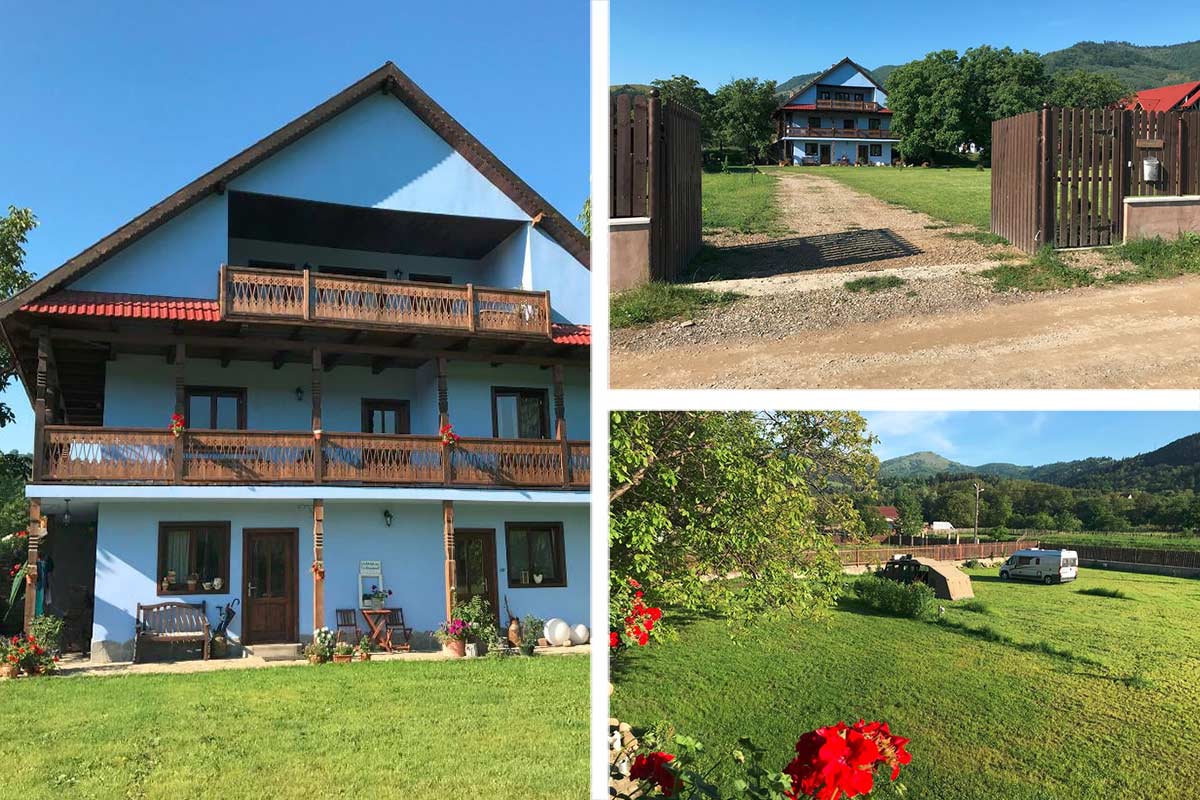
Our advice: Camping in Bacău County
(24 August 2022)
X

(24 August 2022)
Camping La Grădină welcomes its guests in several languages (including German) in Comănești, Bacău County in northeastern Romania.
Twenty (20) parking spaces with comfort and a neat ambiance are offered by the hosts Valentina and Claus Pleye. The campsite is located at an altitude of about 500 meters, close to the river Trotus.
Modern showers and toilets are available, electrical connection, drinking water connection, a caravan disposal station and, of course, WIFI / WLAN. German, Romanian and English are spoken.
Comănești is located west of the city of Bacău, close to the Onca salt mine, the city of Piatra Neamț, the Bicaz gorge with a lake and many, many other excursion destinations in the area and with pure nature right on the doorstep. Northeastern Romania, with its well-known Moldovan monasteries, built in the 15th and 16th centuries, is practically on the threshold.
Twenty (20) parking spaces with comfort and a neat ambiance are offered by the hosts Valentina and Claus Pleye. The campsite is located at an altitude of about 500 meters, close to the river Trotus.
Modern showers and toilets are available, electrical connection, drinking water connection, a caravan disposal station and, of course, WIFI / WLAN. German, Romanian and English are spoken.
Comănești is located west of the city of Bacău, close to the Onca salt mine, the city of Piatra Neamț, the Bicaz gorge with a lake and many, many other excursion destinations in the area and with pure nature right on the doorstep. Northeastern Romania, with its well-known Moldovan monasteries, built in the 15th and 16th centuries, is practically on the threshold.
We thank Camping La Gradina for the permission to use this image(s)
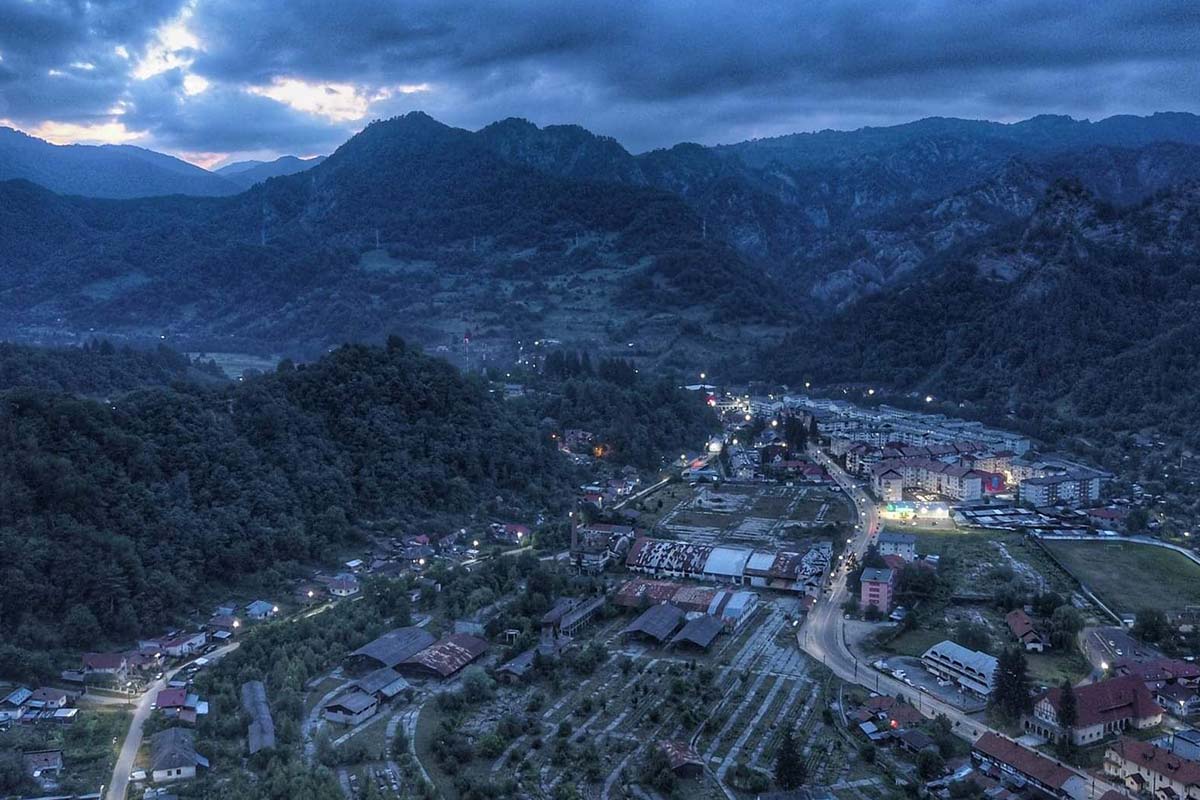
Brezoi
(20 May 2022)
X

(20 May 2022)
Brezoi is a small town in Vâlcea County, consisting of the sub-municipality of Brezoi and the villages of Călineşti, Corbu, Drăgăneşti, Golotreni, Păscoaia, Valea lui Stan, Vasilatu and Văratica.
The city offers cultural-historical and archeological sites, monasteries and churches, many offers in the field of sports, fishing, hiking and cycling ... and of course mountains, nature and more mountains and nature.
Brezoi is located about 80 km south of Hermannstadt (Sibiu) in the middle of the Cozia National Park.
Image source: Destination of the Year
The city offers cultural-historical and archeological sites, monasteries and churches, many offers in the field of sports, fishing, hiking and cycling ... and of course mountains, nature and more mountains and nature.
Brezoi is located about 80 km south of Hermannstadt (Sibiu) in the middle of the Cozia National Park.
Image source: Destination of the Year
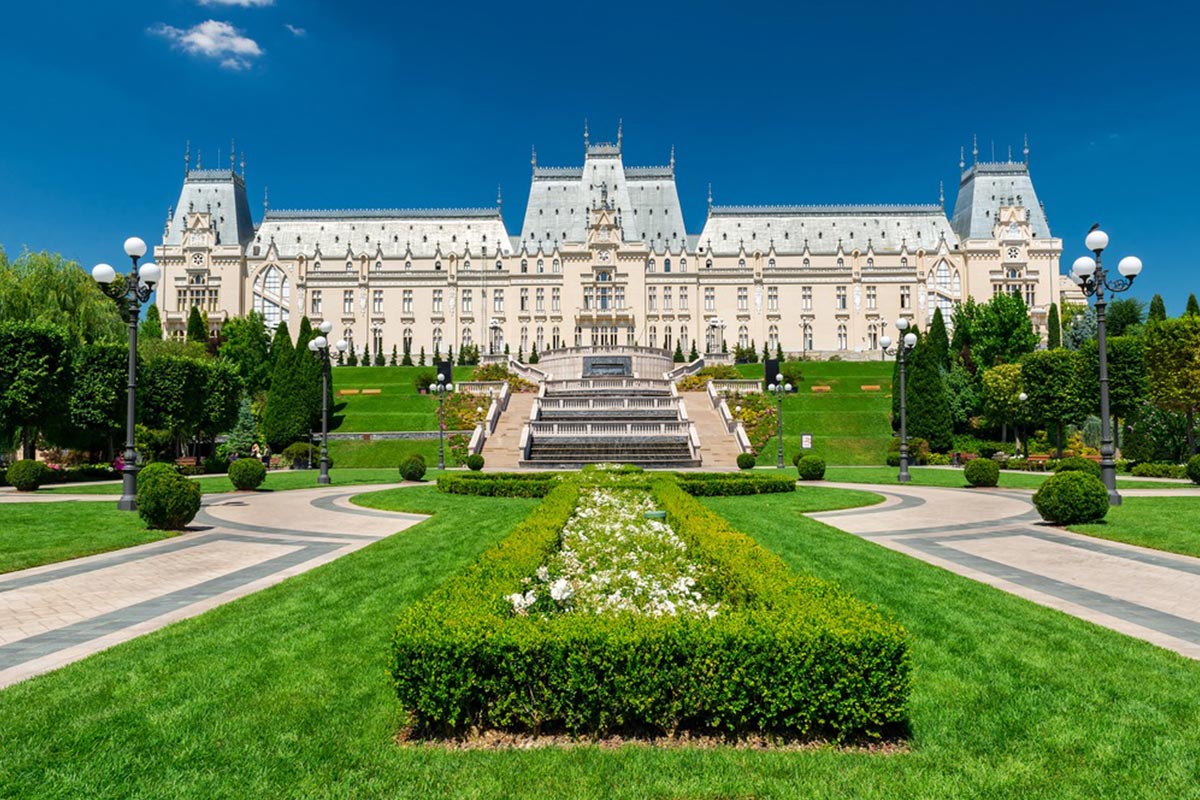
Destinations of the year 2022
(20 May 2022)
X

(20 May 2022)
Iasi, the ancient capital of Moldova, a city on seven hills, is surrounded by charm and culture, history and poetry.
Centuries-old monasteries and churches, museums and memorials, the country's first university and the towering Palace of Culture are just some of the attractions that make Iasi definitely worth a visit.
Text / Image Source: Destination of the Year
Image: Palace of Culture in Iasi, May 2022
Centuries-old monasteries and churches, museums and memorials, the country's first university and the towering Palace of Culture are just some of the attractions that make Iasi definitely worth a visit.
Text / Image Source: Destination of the Year
Image: Palace of Culture in Iasi, May 2022
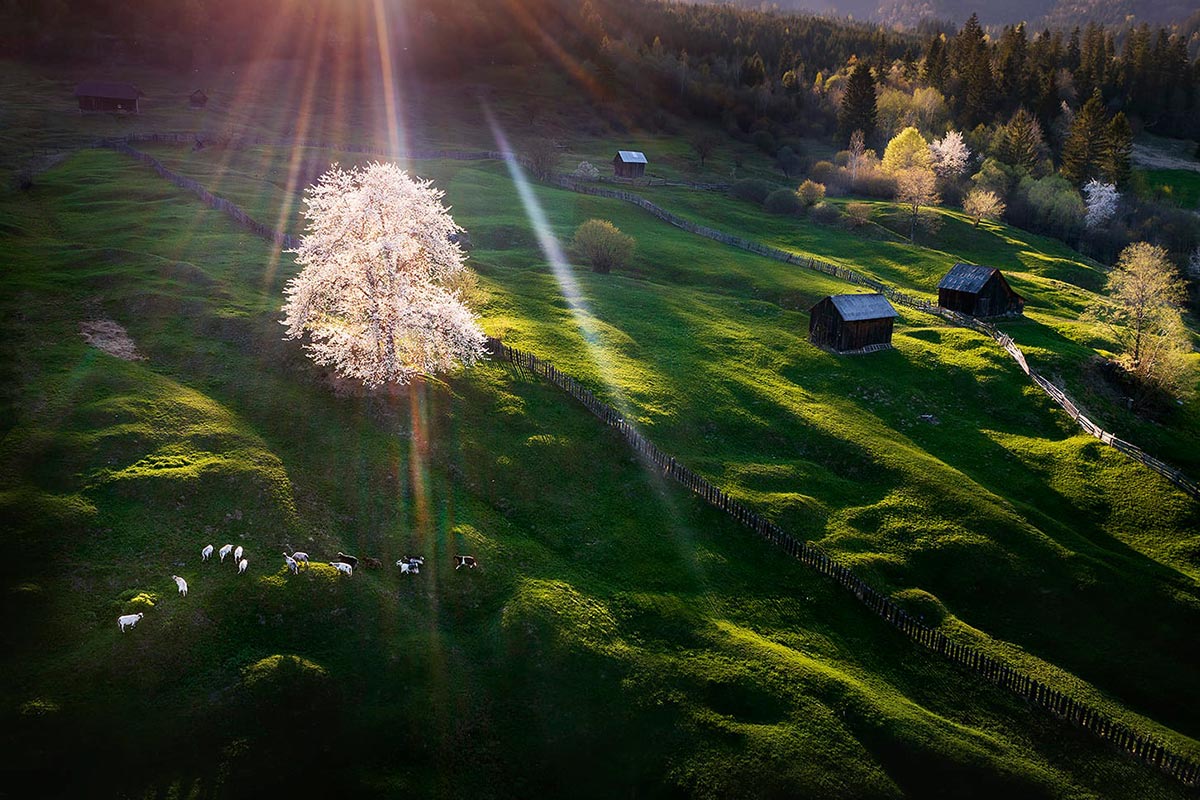
Spring in Bucovina
(10 May 2022)
X

(10 May 2022)
The Bukovina Region (Buchenland in german) is a historical landscape in the border area between Central, South-Eastern and Eastern Europe. The southern half belongs to Romania and is part of Suceava County, which also includes the monasteries of Moldova.
Like Bessarabia to the east, Bukovina has been part of the historical Principality of Moldavia for centuries and, with its multiethnic population, belonged to the territory of the Habsburg Monarchy from 1775 to 1918. To the northwest there is Eastern Galicia, to the southwest there is Transylvania.
Thanks to Sorin Onișor for permission to use this image (April 2022).
Like Bessarabia to the east, Bukovina has been part of the historical Principality of Moldavia for centuries and, with its multiethnic population, belonged to the territory of the Habsburg Monarchy from 1775 to 1918. To the northwest there is Eastern Galicia, to the southwest there is Transylvania.
Thanks to Sorin Onișor for permission to use this image (April 2022).

Spring in Bucovina
(08 May 2022)
X

(08 May 2022)
The Bukovina Region (German and Buchenland) is a historical landscape in the border area between Central, South-Eastern and Eastern Europe. The southern half belongs to Romania and is part of Suceava County, which also includes the monasteries of Moldova.
Like Bessarabia to the east, Bukovina has been part of the historical Principality of Moldavia for centuries and, with its multiethnic population, belonged to the territory of the Habsburg Monarchy from 1775 to 1918. To the northwest there is Eastern Galicia, to the southwest there is Transylvania.
Thanks to Sorin Onișor for permission to use this image (April 2022).
Like Bessarabia to the east, Bukovina has been part of the historical Principality of Moldavia for centuries and, with its multiethnic population, belonged to the territory of the Habsburg Monarchy from 1775 to 1918. To the northwest there is Eastern Galicia, to the southwest there is Transylvania.
Thanks to Sorin Onișor for permission to use this image (April 2022).
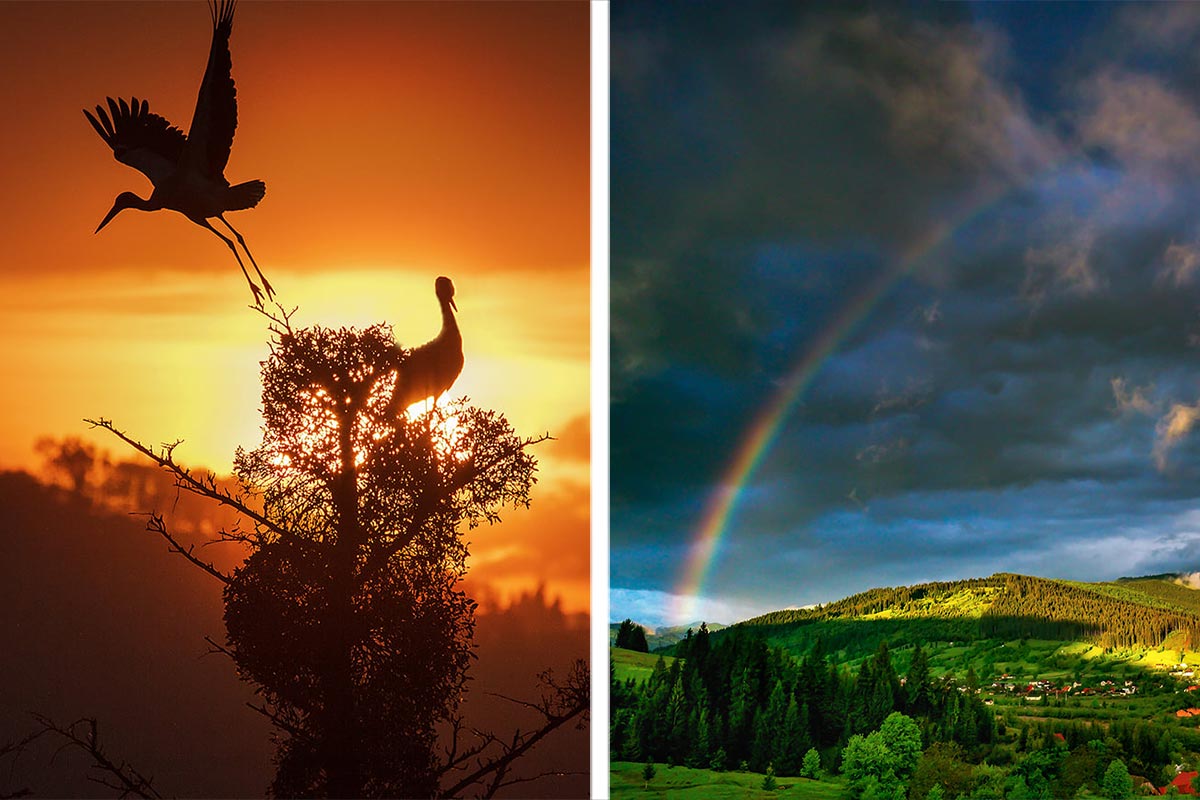
Spring in Bucovina
(29 March 2022)
X

(29 March 2022)
The Bukovina Region (German and Buchenland) is a historical landscape in the border area between Central, South-Eastern and Eastern Europe. The southern half belongs to Romania and is part of Suceava County, which also includes Moldovan monasteries.
Like Bessarabia to the east, Bukovina has been part of the historical principality of Moldavia for centuries and, with its multiethnic population, belonged to the territory of the Habsburg Monarchy from 1775 to 1918. Eastern Galicia lies to the northwest and Transylvania to the south. west.
Thanks to photographer Sorin Onisor ( https://www.facebook.com/sorinonisor ) for permission to use this image.
Like Bessarabia to the east, Bukovina has been part of the historical principality of Moldavia for centuries and, with its multiethnic population, belonged to the territory of the Habsburg Monarchy from 1775 to 1918. Eastern Galicia lies to the northwest and Transylvania to the south. west.
Thanks to photographer Sorin Onisor ( https://www.facebook.com/sorinonisor ) for permission to use this image.
We thank Sorin Onisor for the permission to use this image(s)
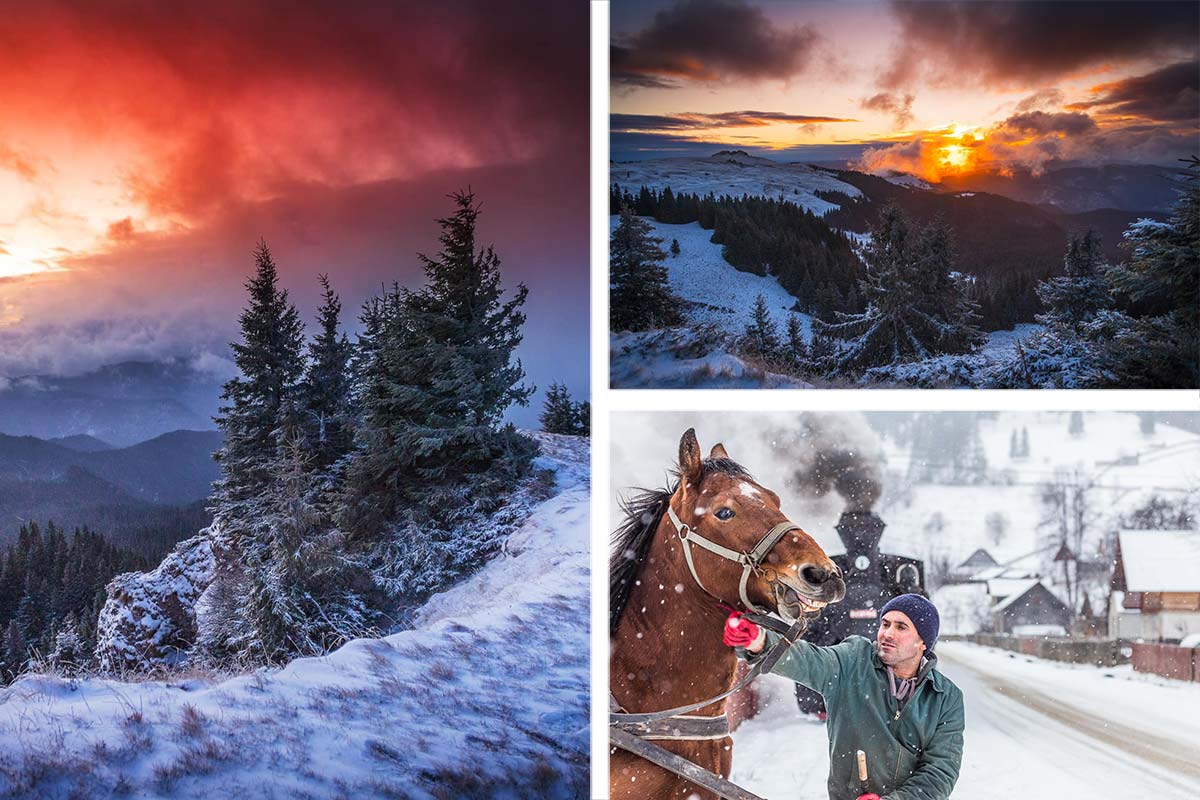
Winter in Bucovina
(18 January 2022)
X

(18 January 2022)
Bukovina (German: Buchenland) is a historical landscape in the border area between Central, South-Eastern and Eastern Europe. The southern half belongs to Romania and is part of Suceava County, which also includes Moldovan monasteries, which are part of the UNESCO World Heritage.
Like Bessarabia to the east, Bukovina has been part of the historical principality of Moldavia for centuries and, with its multiethnic population, belonged to the territory of the Habsburg Monarchy from 1775 to 1918. Eastern Galicia lies to the northwest and Transylvania to the southwest.
Like Bessarabia to the east, Bukovina has been part of the historical principality of Moldavia for centuries and, with its multiethnic population, belonged to the territory of the Habsburg Monarchy from 1775 to 1918. Eastern Galicia lies to the northwest and Transylvania to the southwest.
We thank Cătălin Urdoi for the permission to use this image(s)
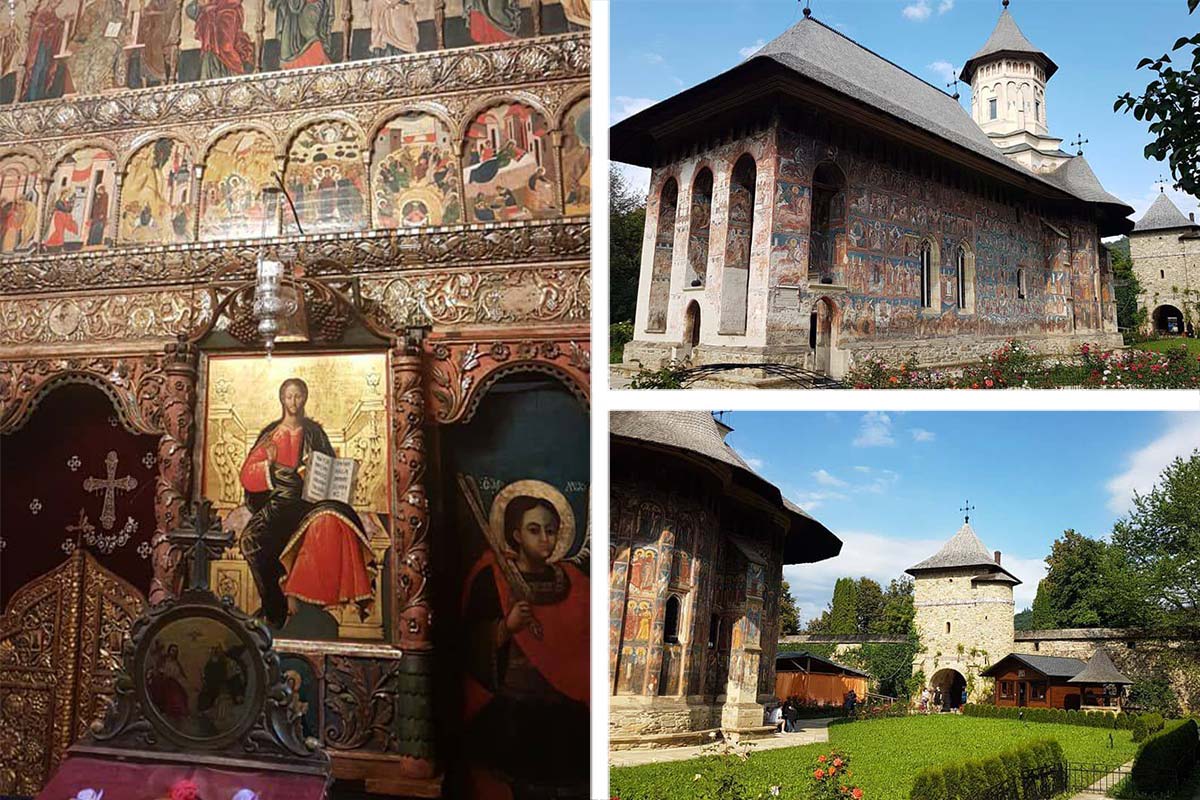
Bukovina - Moldauklöster
(03 December 2021)
X

(03 December 2021)
Moldovan monasteries are located in Bukovina and were built in the 15th and 16th centuries in what was then the Prince's Tower of Moldova. Monasteries are famous for their magnificent frescoes. Many of the buildings go back to Stephen the Great, who is supposed to have founded a monastery for every battle won. Eight are part of the world's cultural heritage. The special thing about Moldovan monasteries is their colorful painting, which is unique in Europe. The monks also wanted to bring the contents of Holy Scripture closer to the people below, who could neither write nor read. And so they used the interior walls, facades, and protective walls of the monastery to describe scenes and parables from the Bible in colorful drawings, paintings, and frescoes. These are considered absolute masterpieces of Byzantine art.
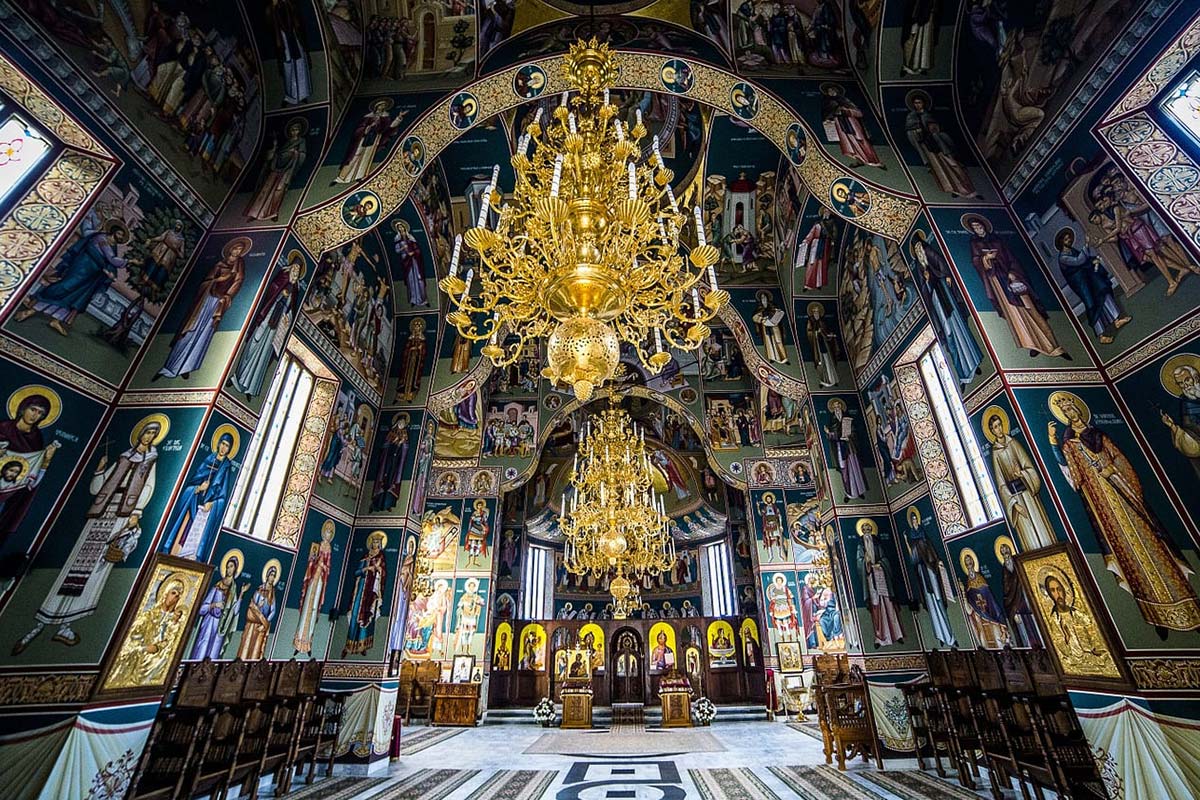
Putna im Landkreis Monastery Suceava
(20 October 2021)
X

(20 October 2021)
Putna Monastery, in northeastern Romania, is located about 70 kilometers from the city of Suceava. It belongs to a group of Romanian Orthodox monasteries - the so-called Moldovan monasteries - in southern Bukovina (historical landscape in the border area between Central, South-Eastern and Eastern Europe).



